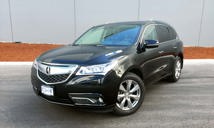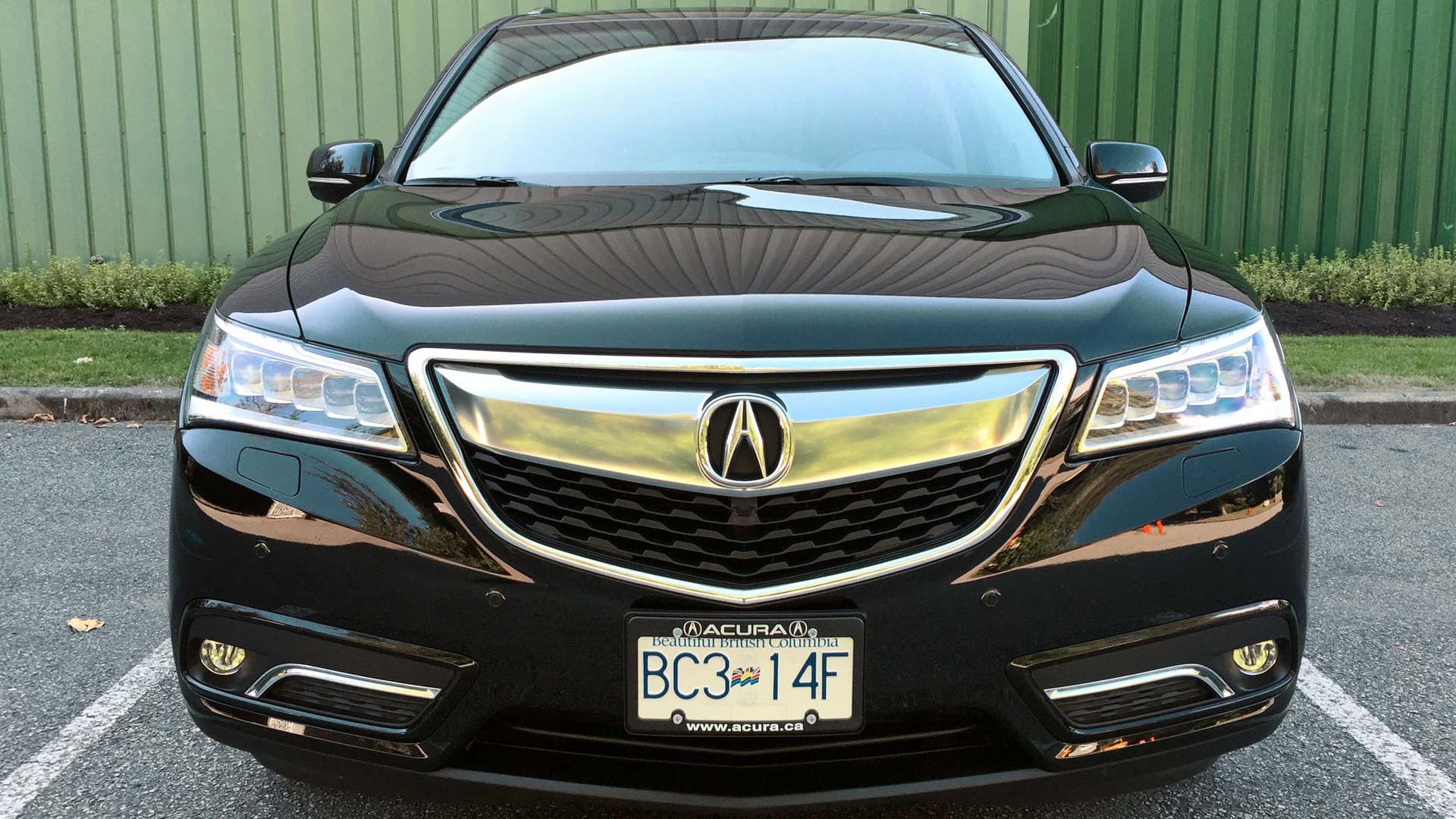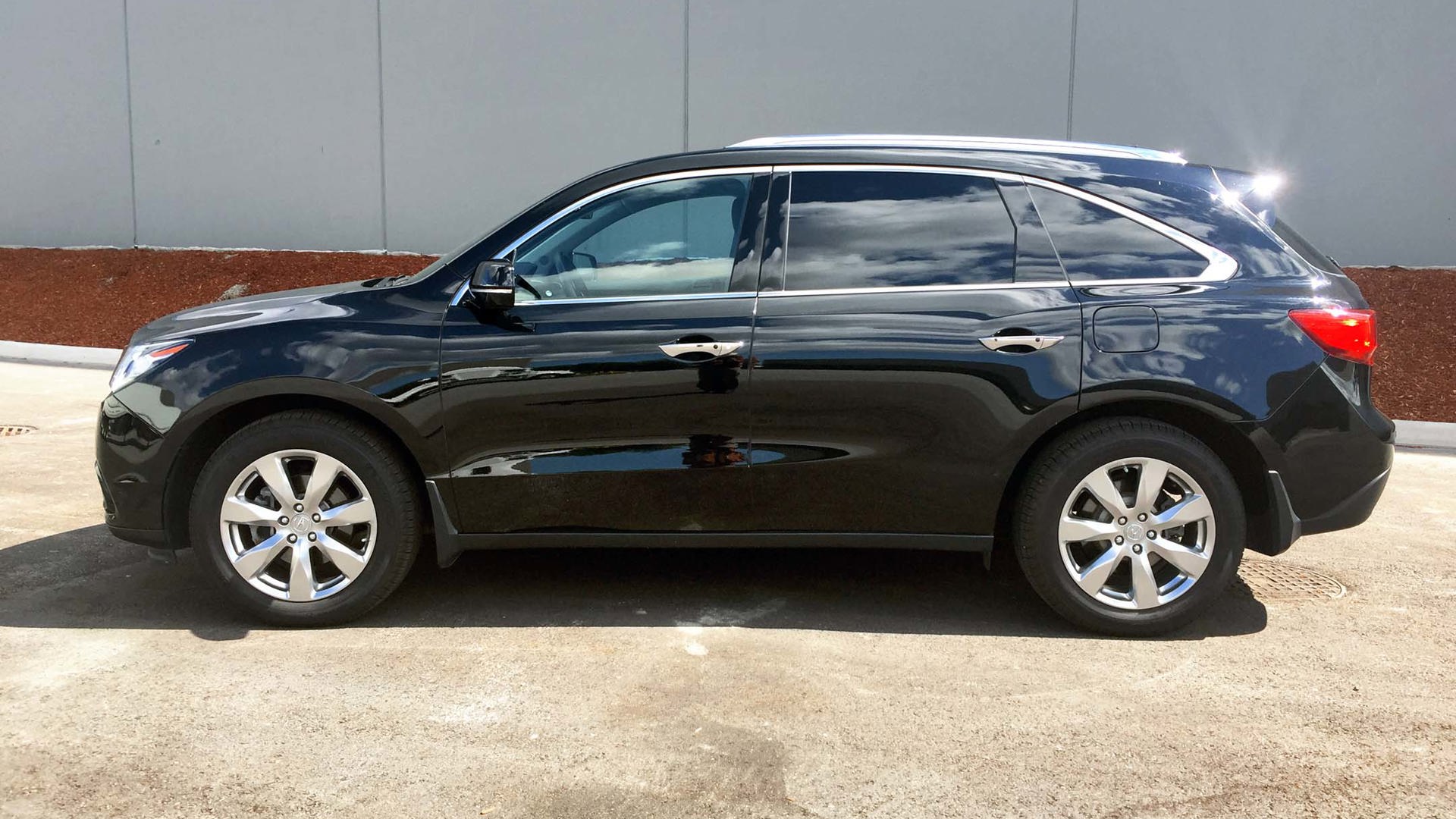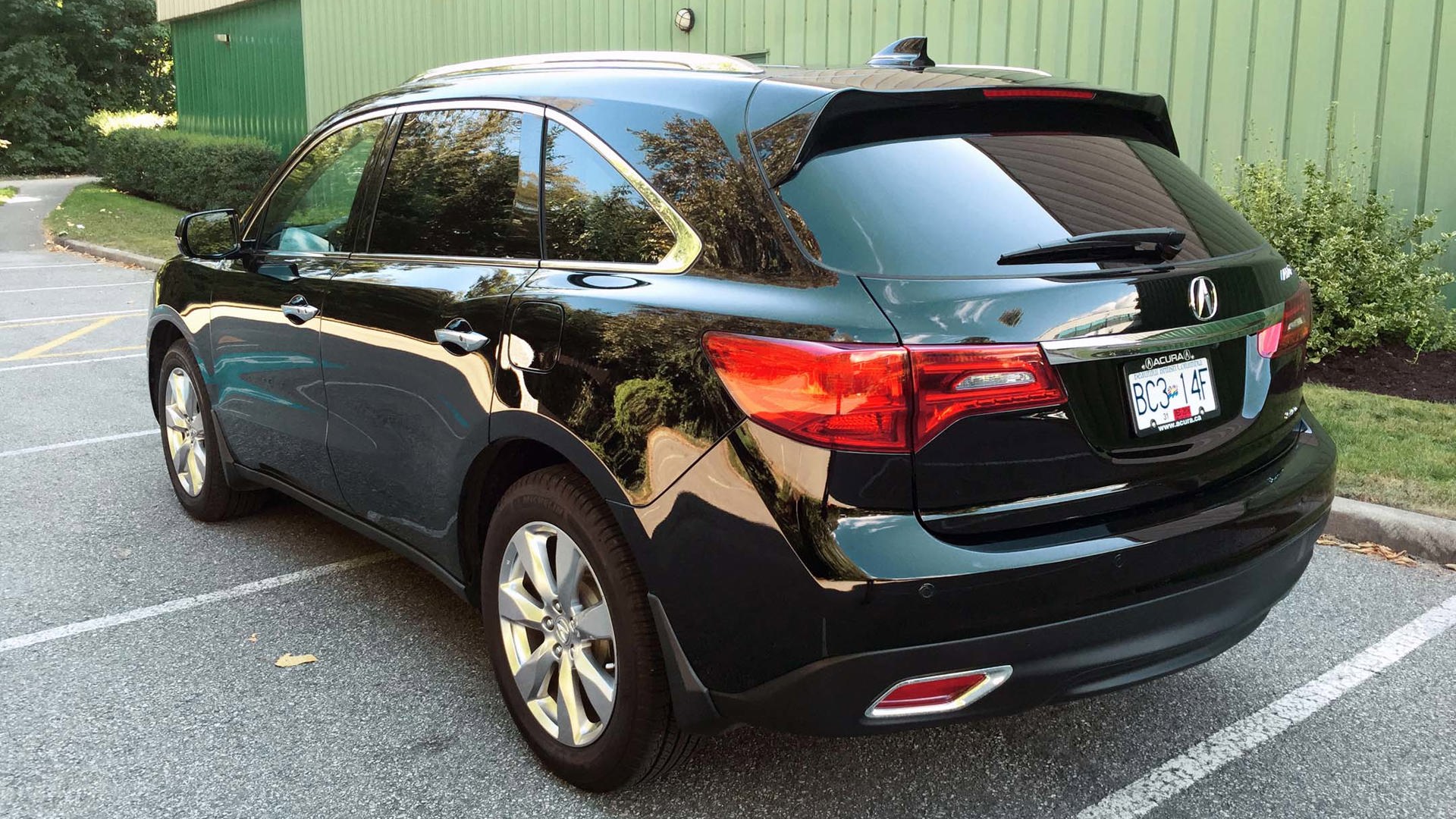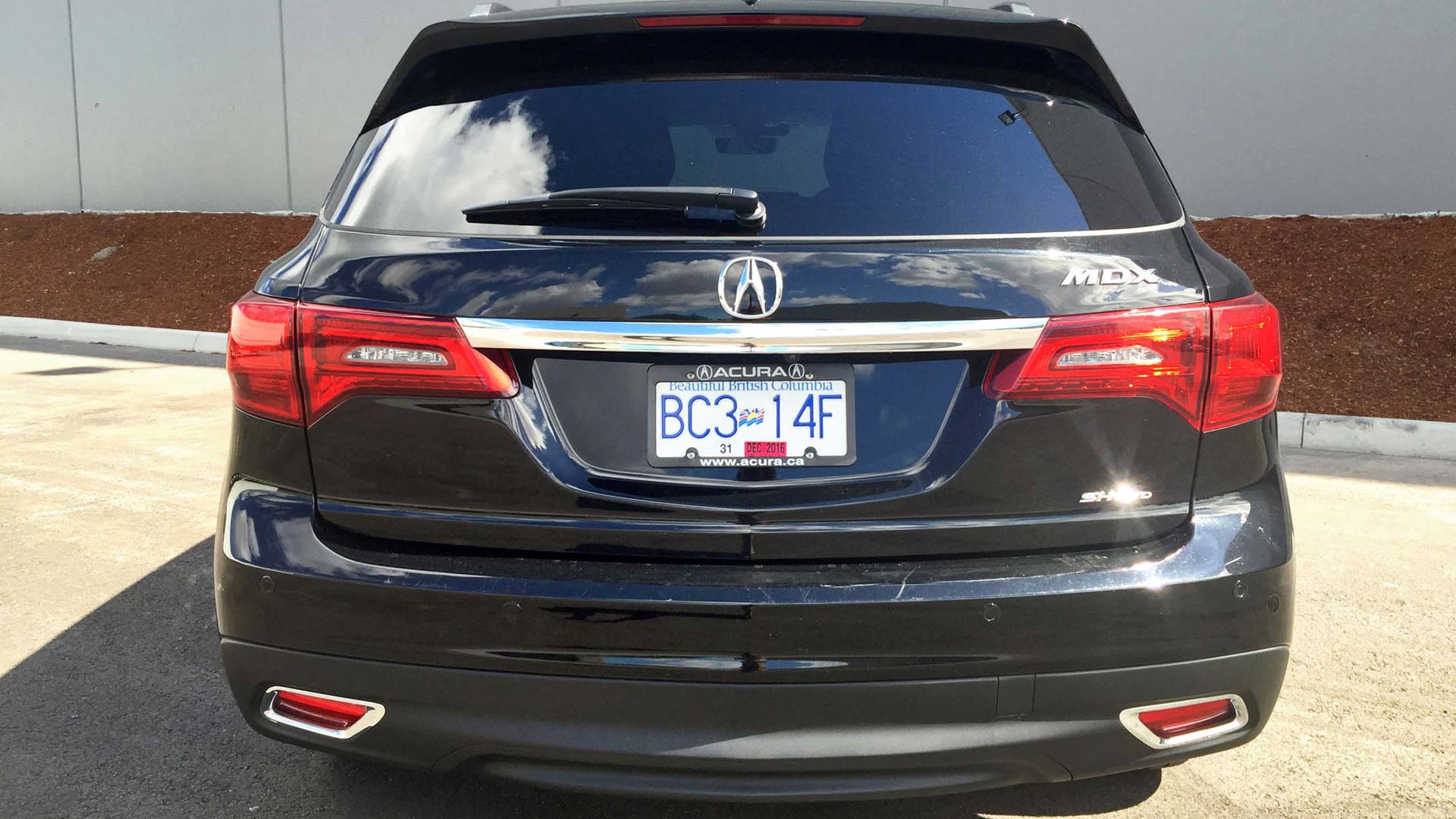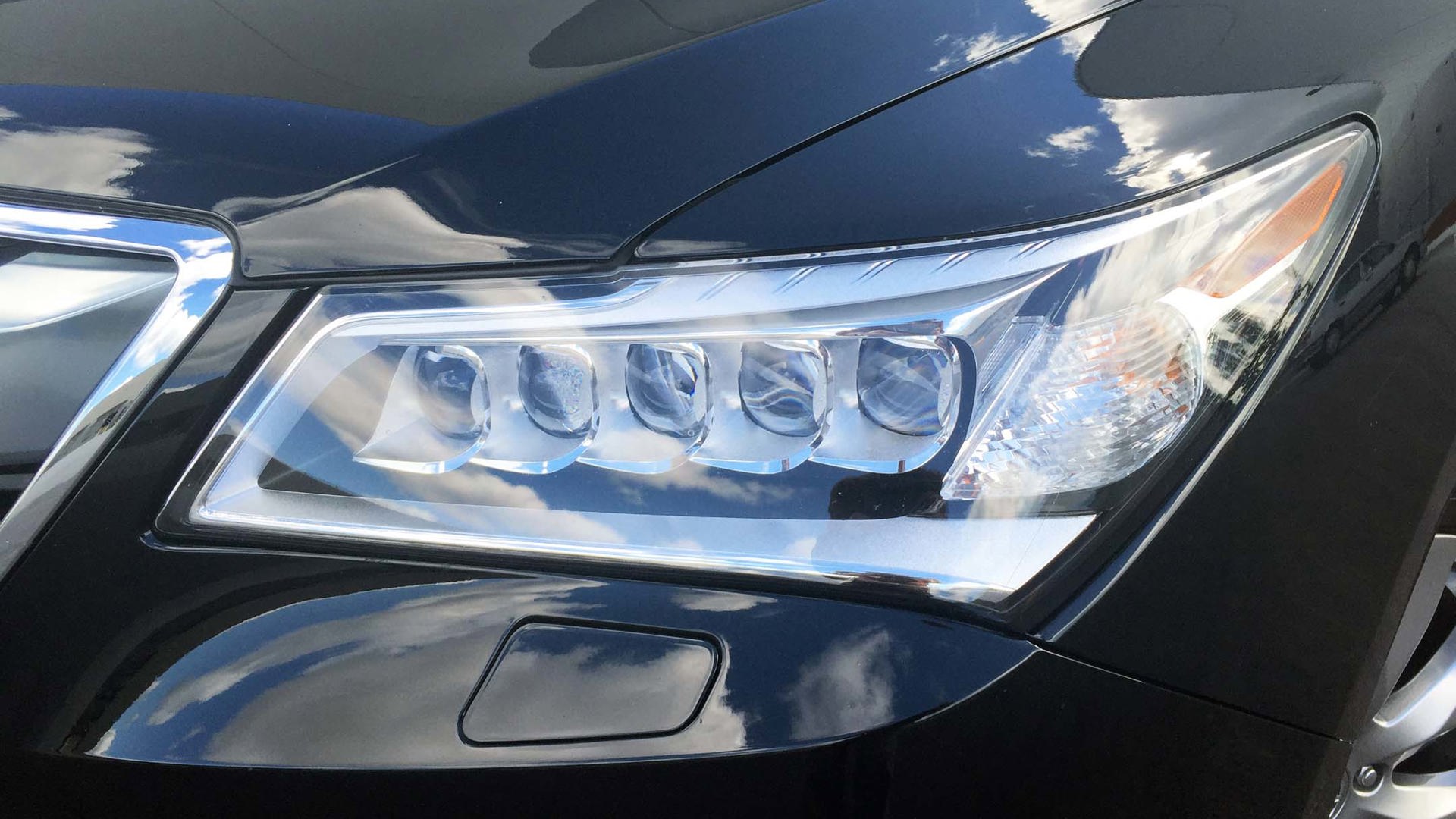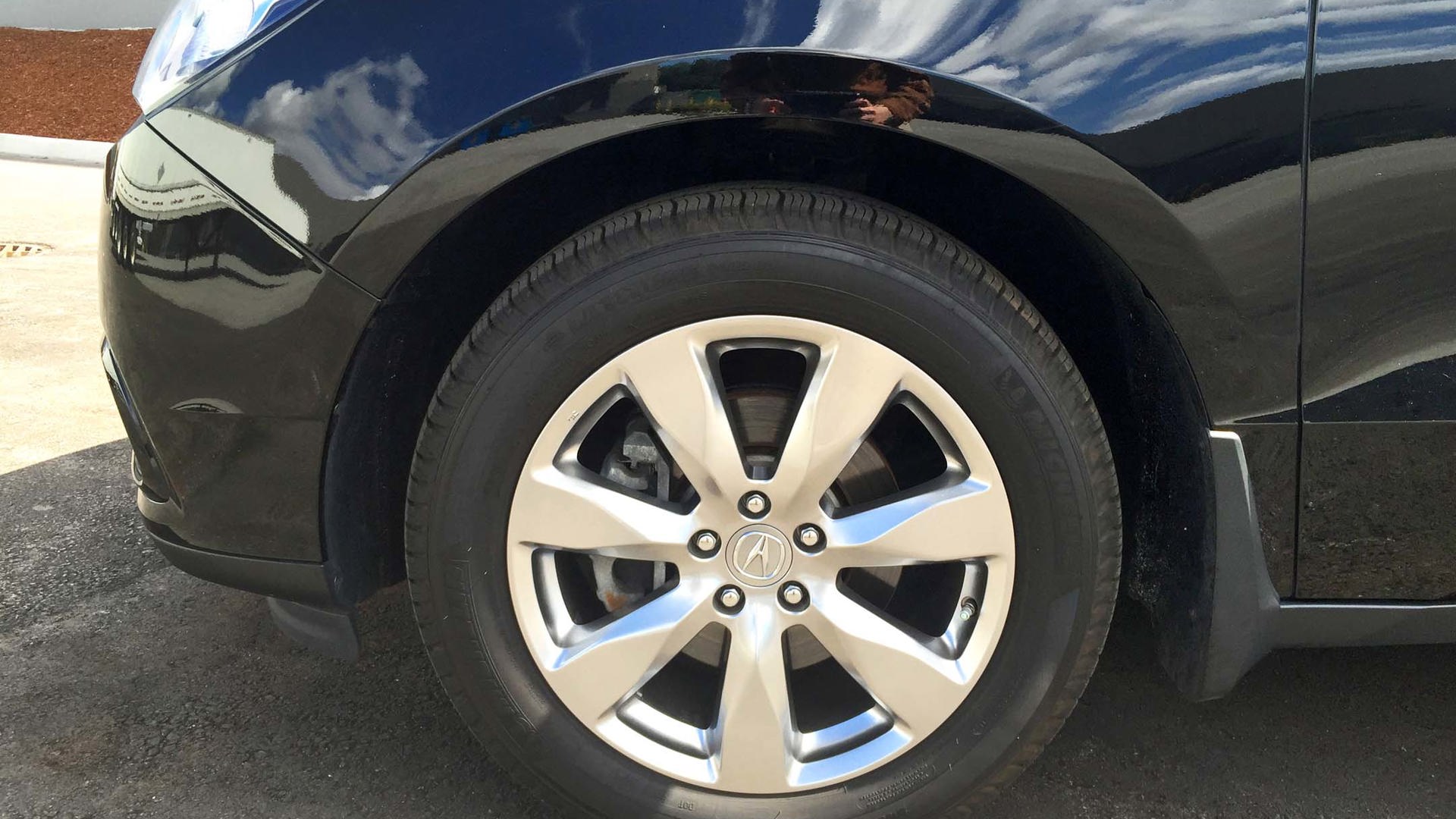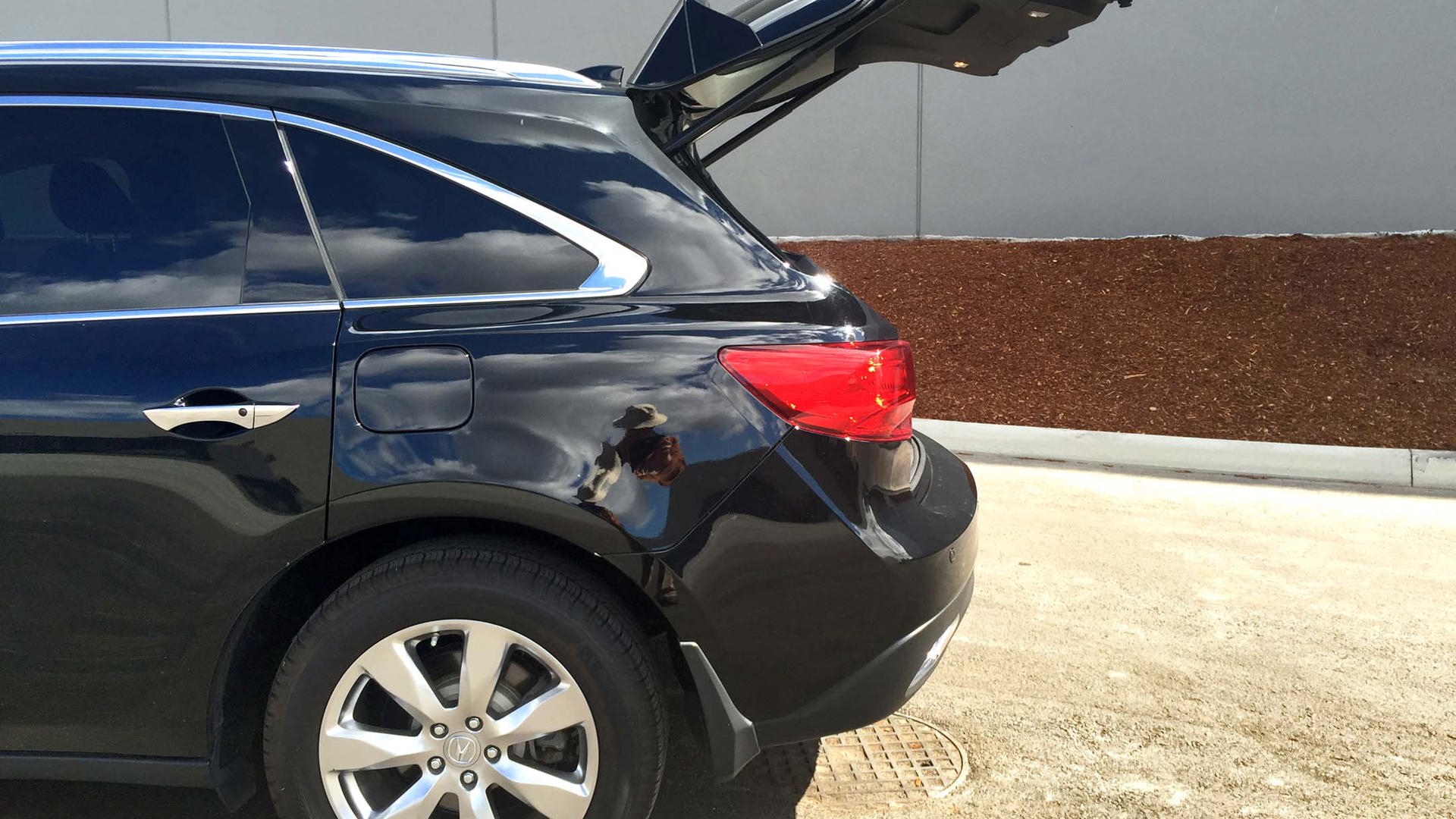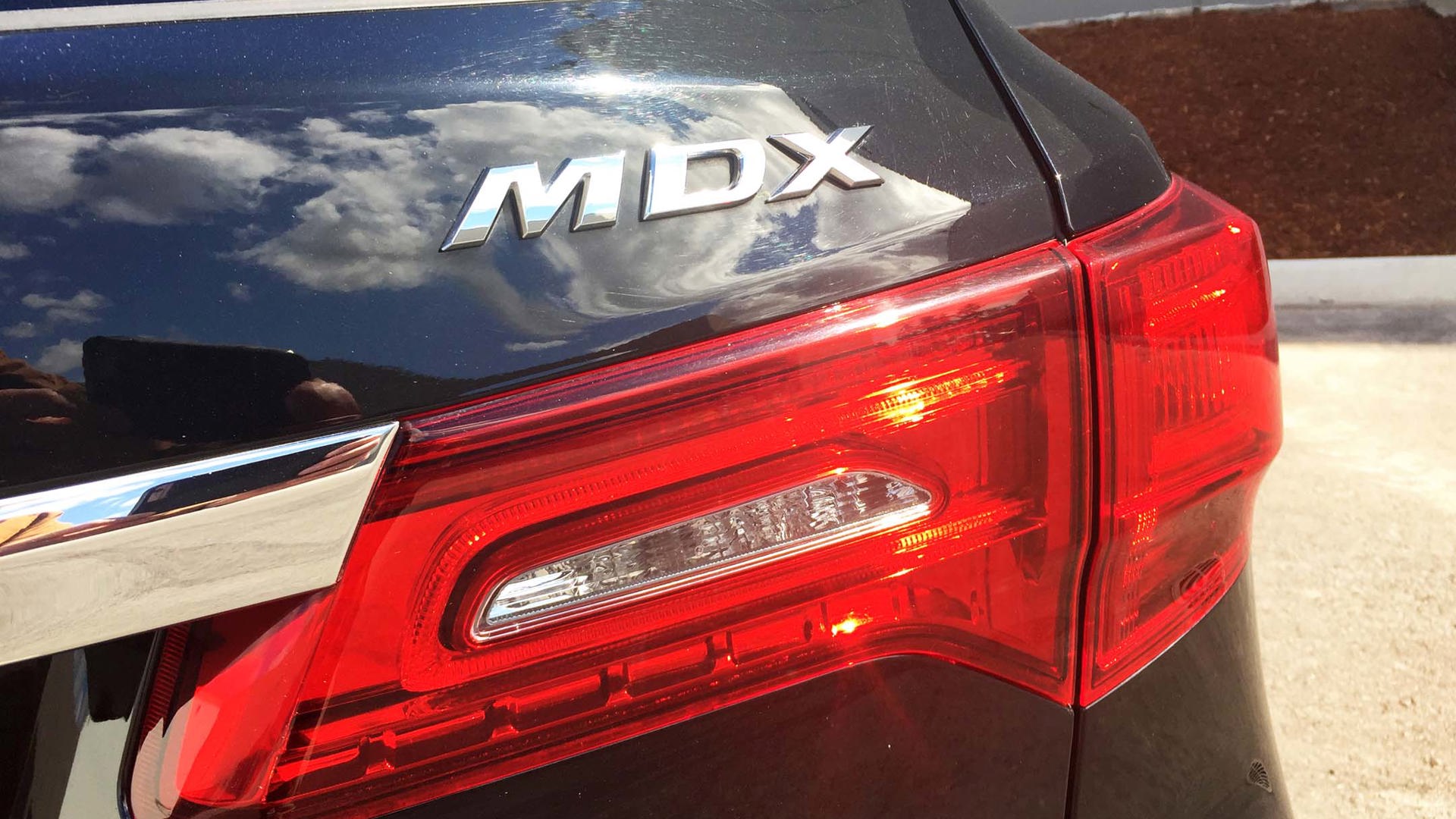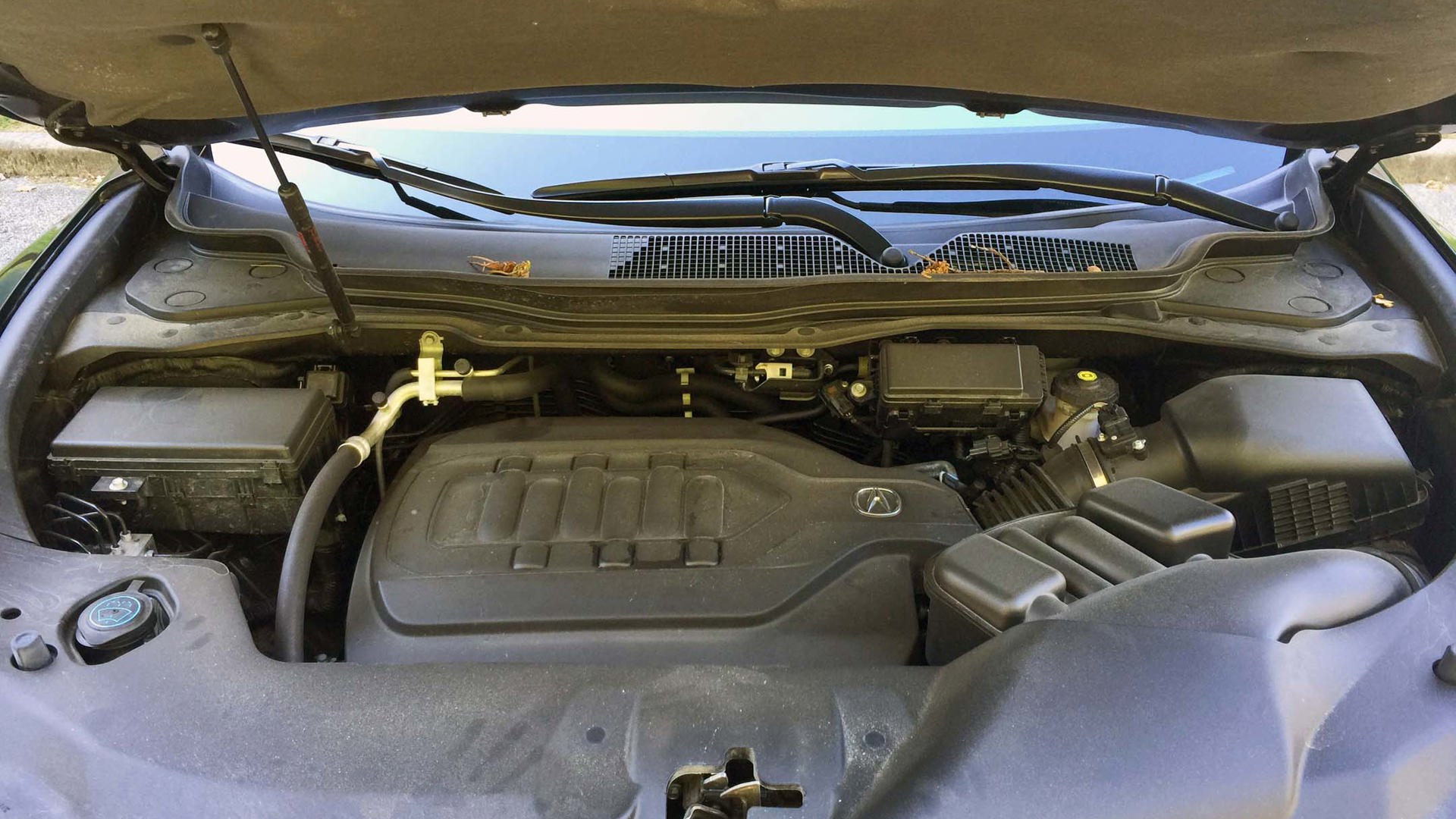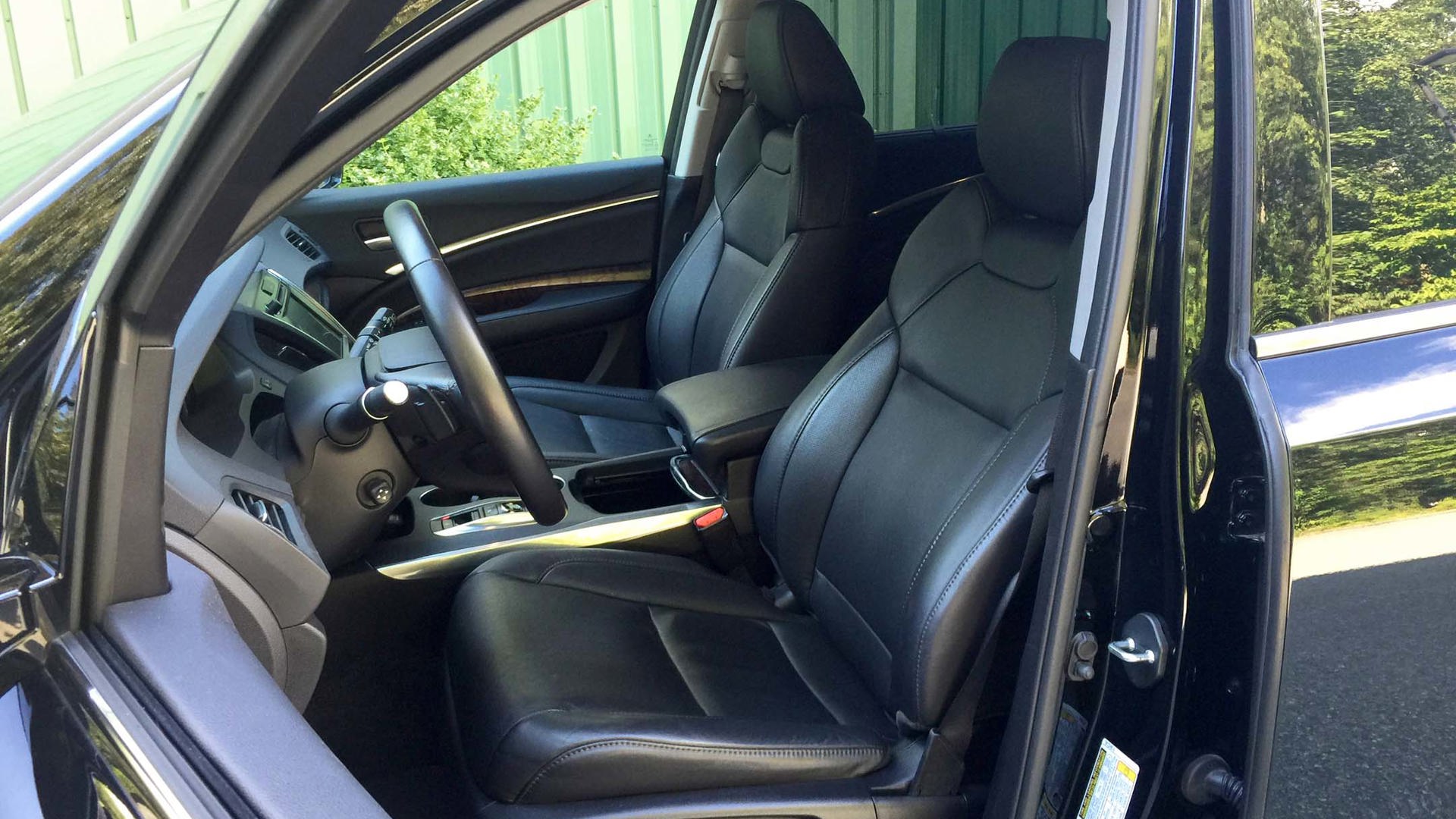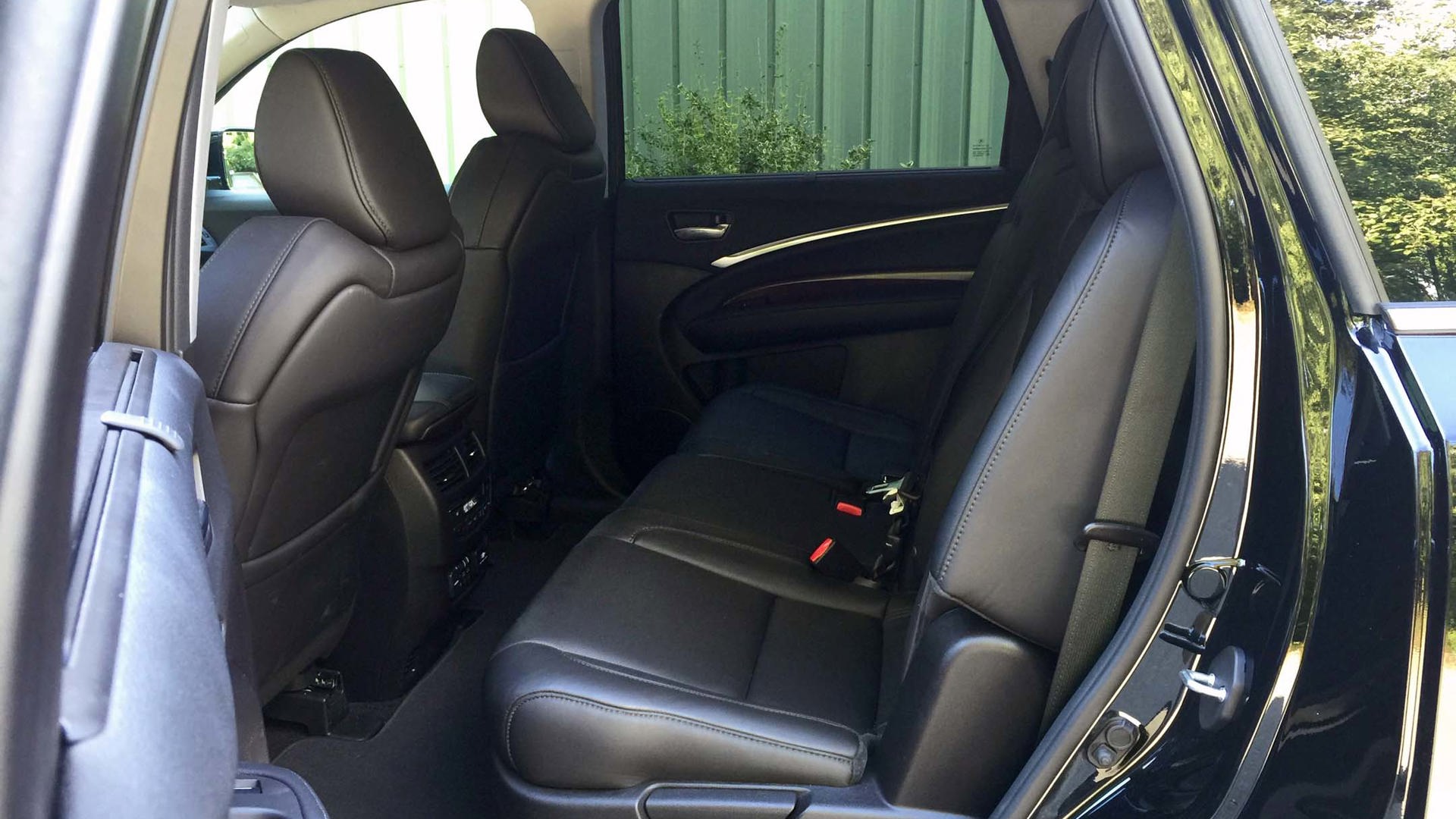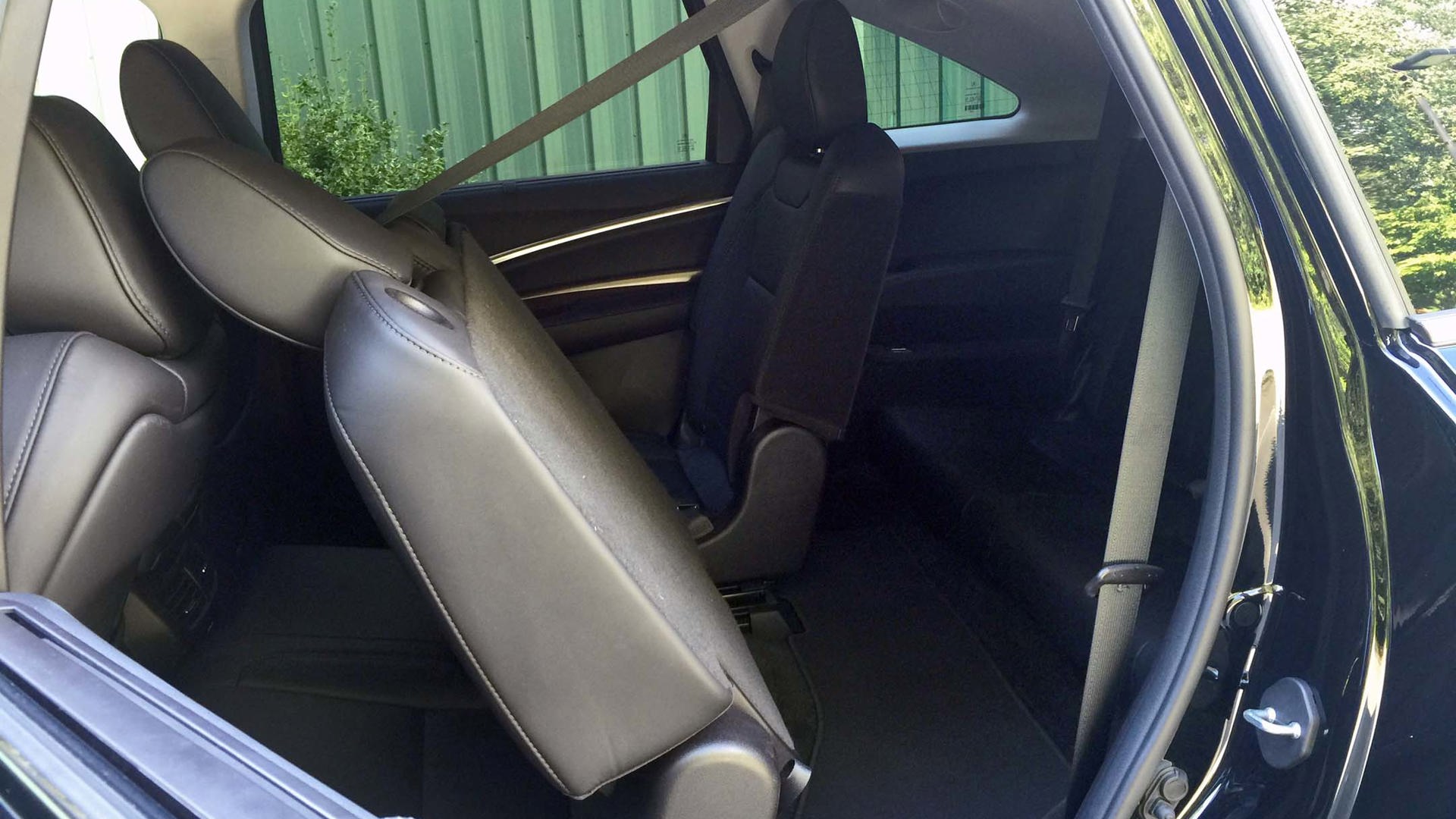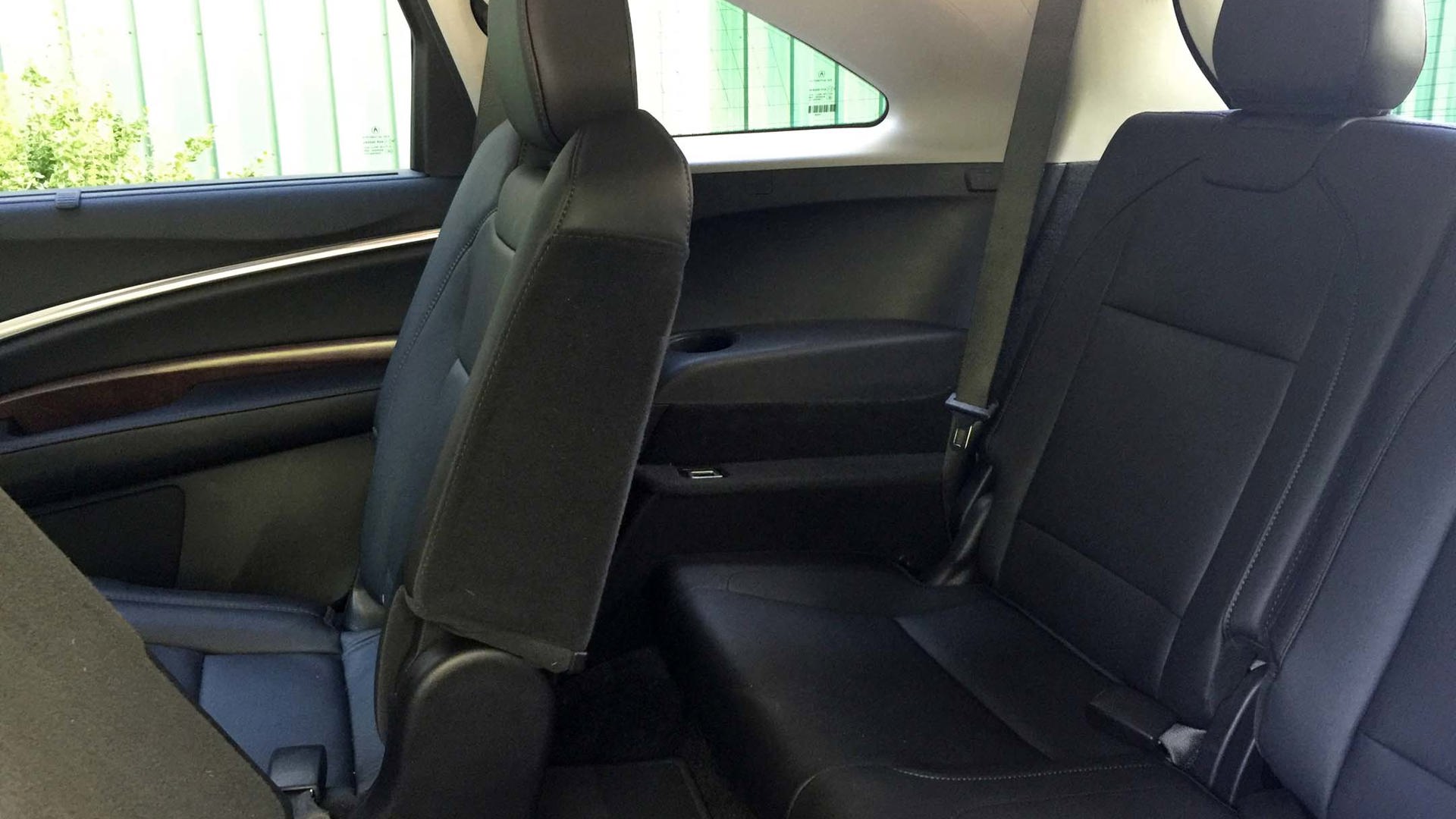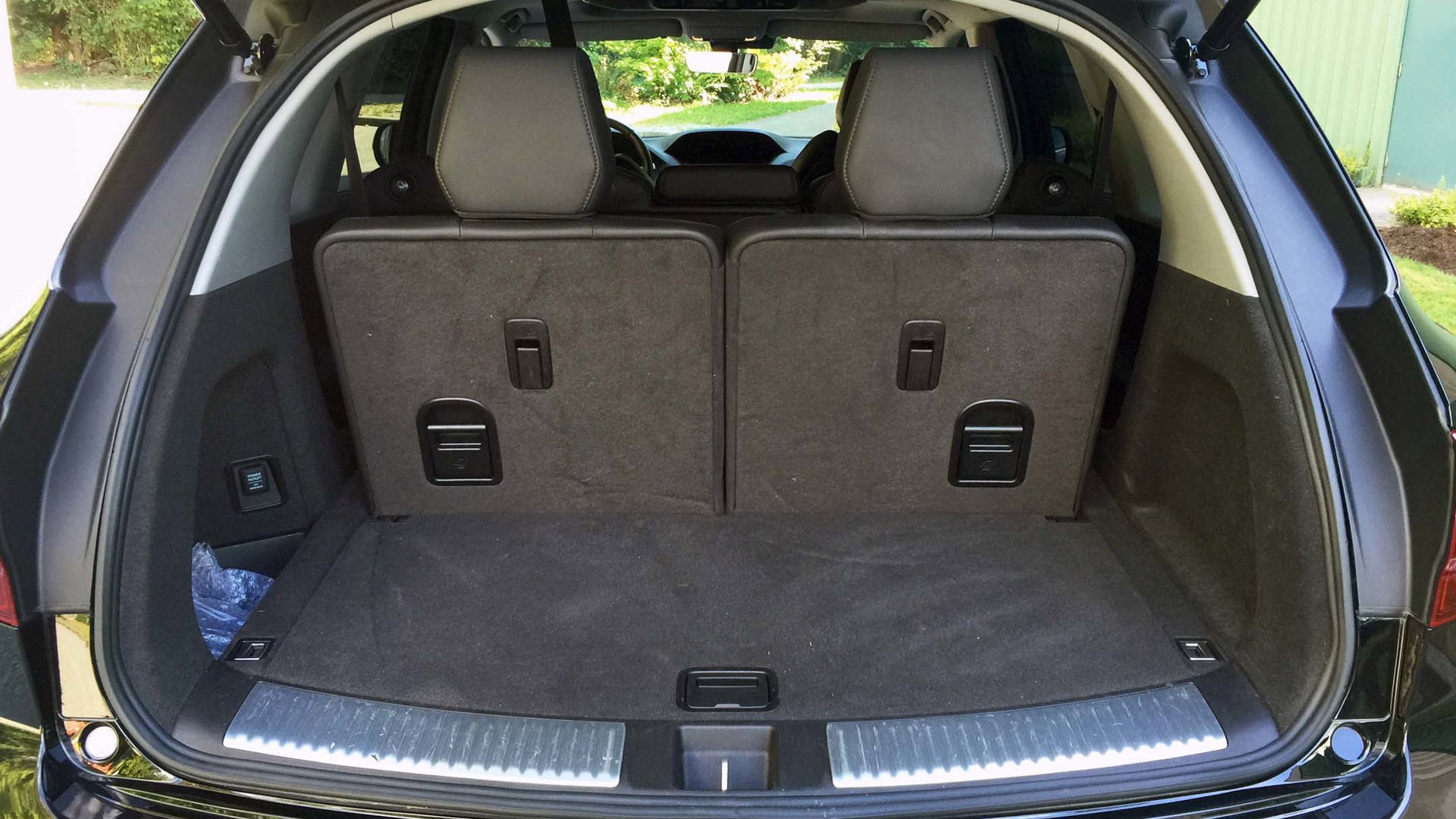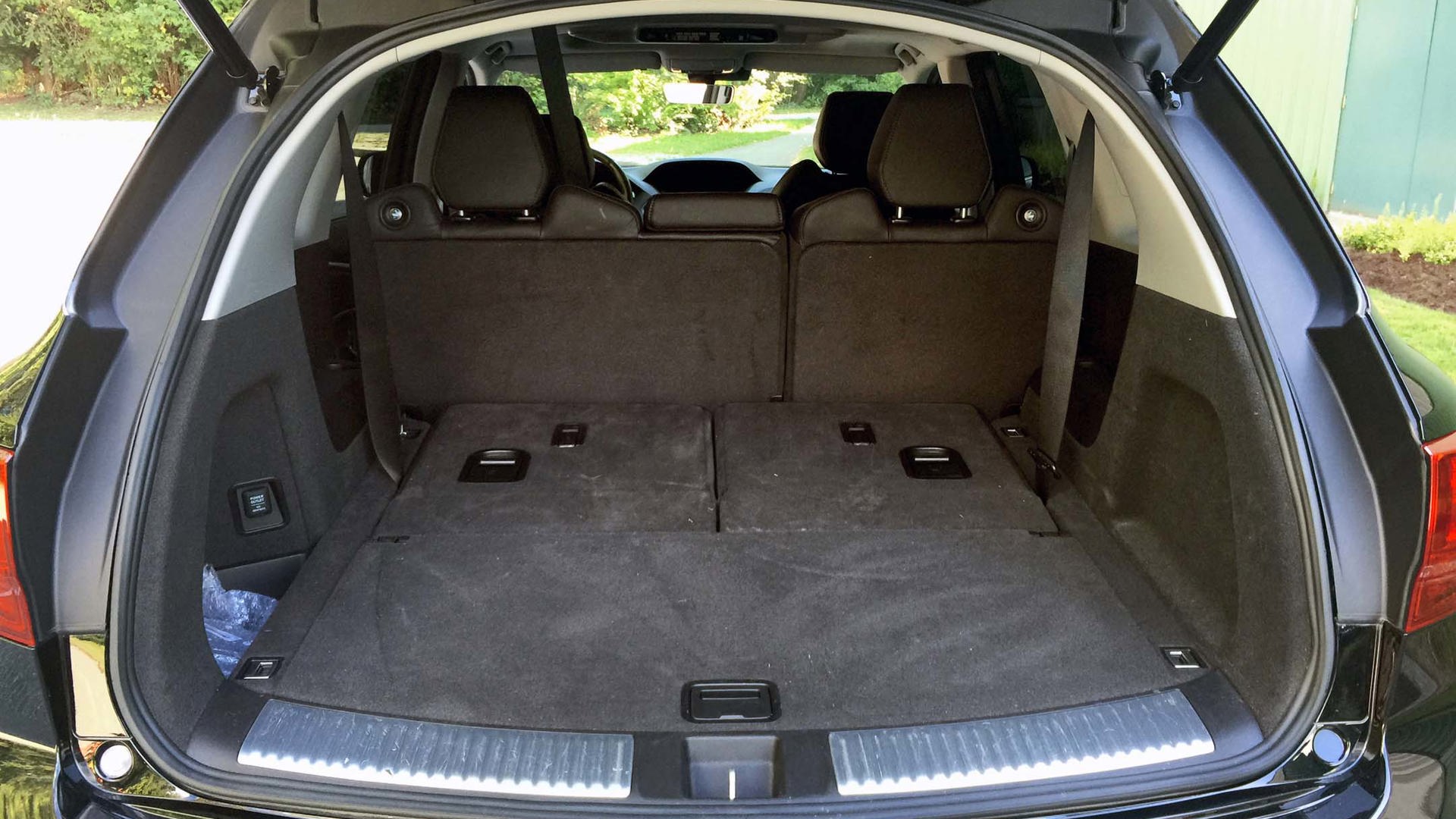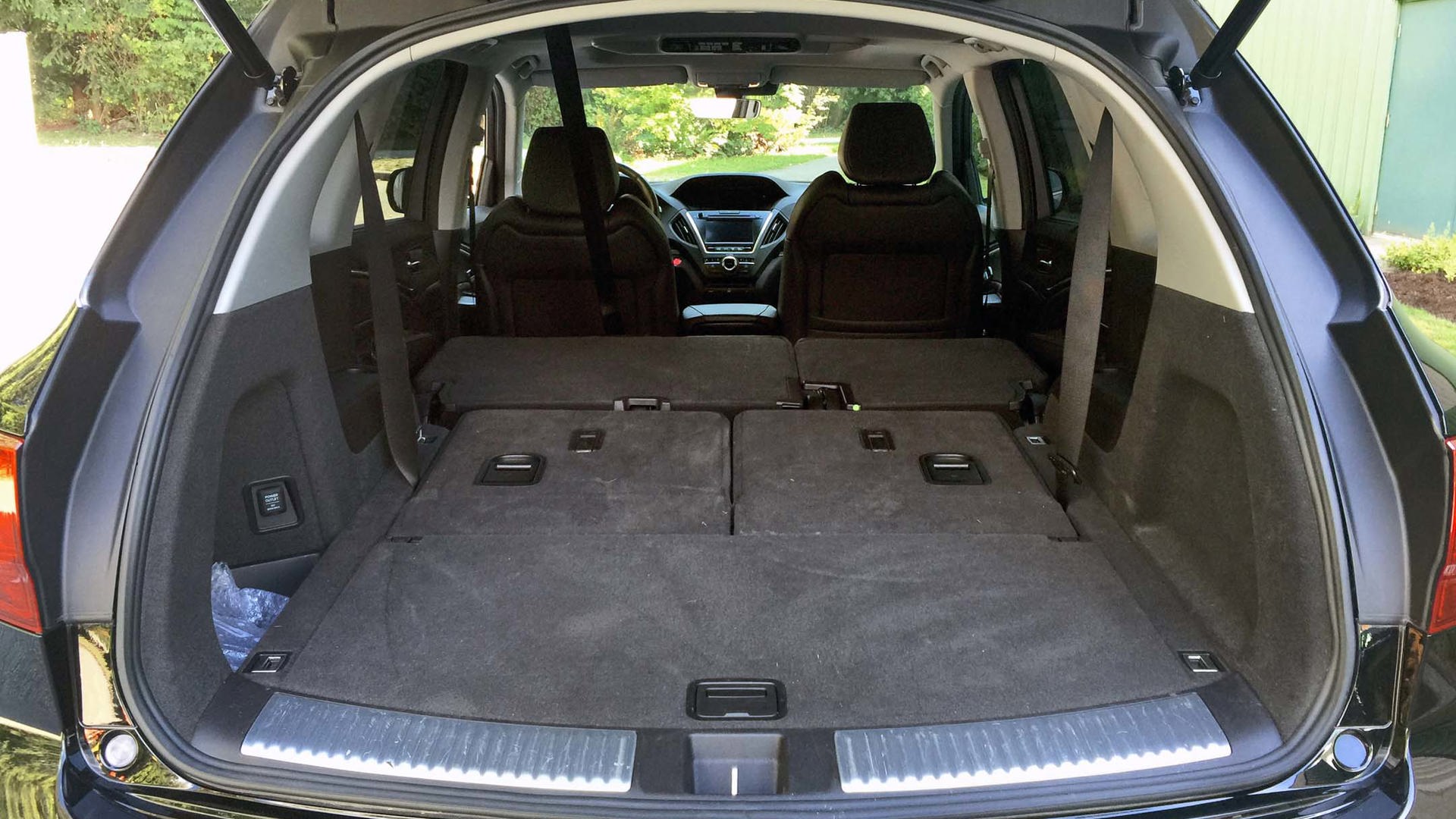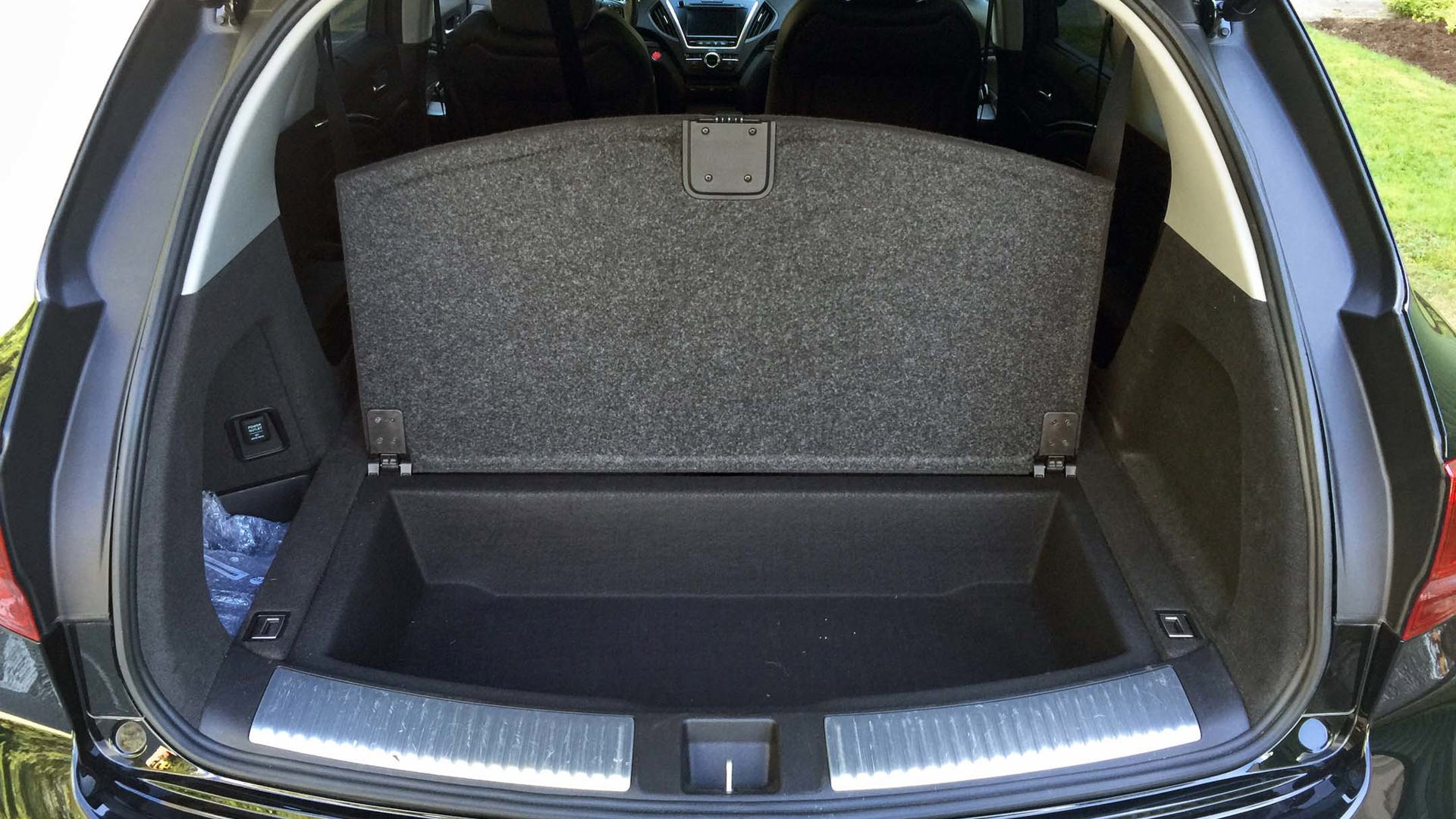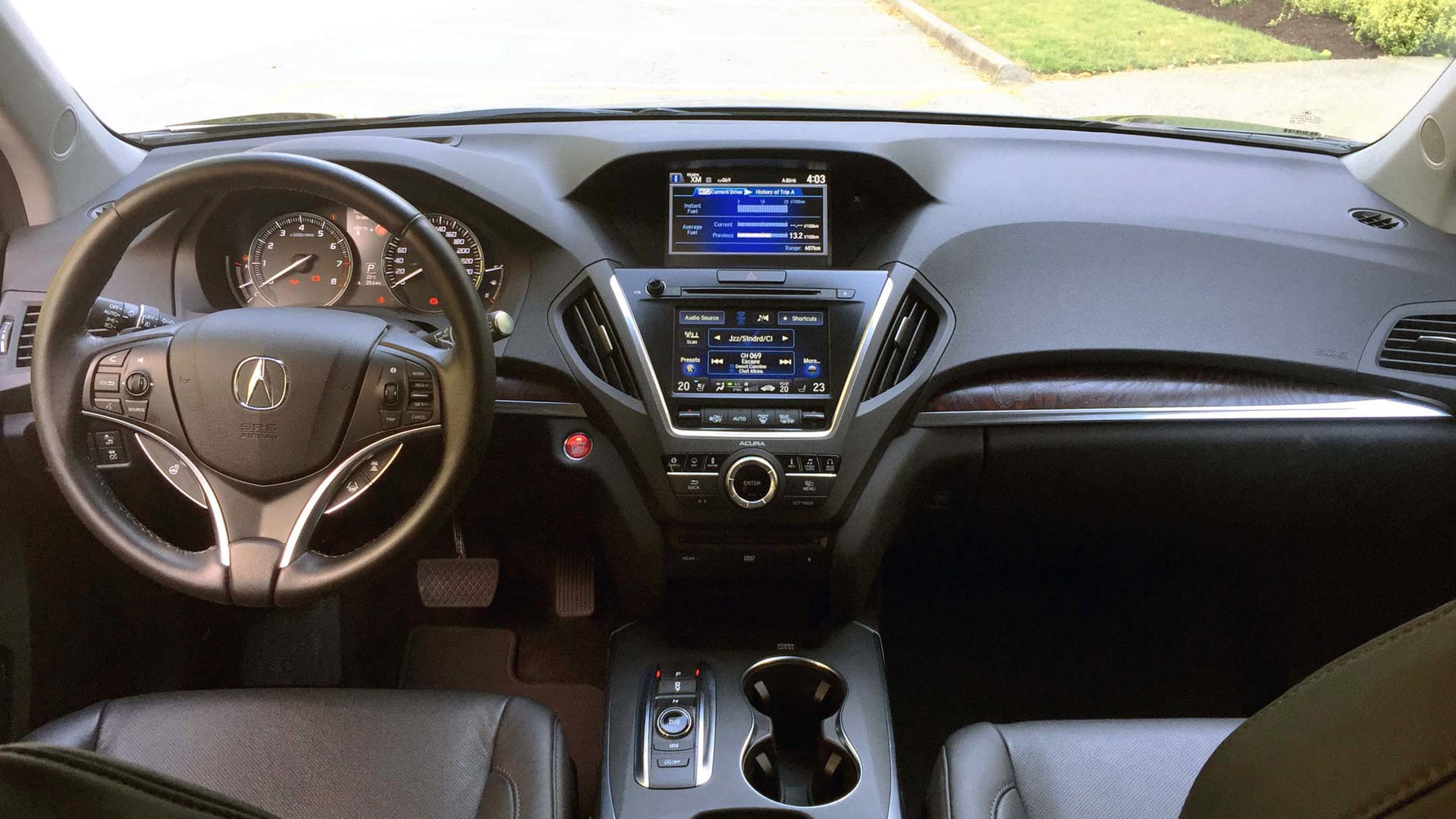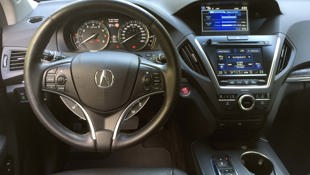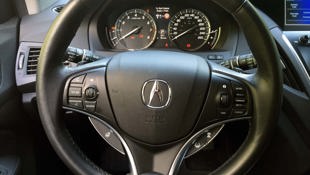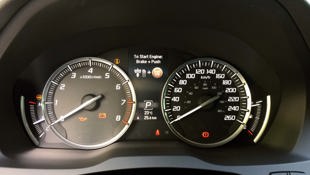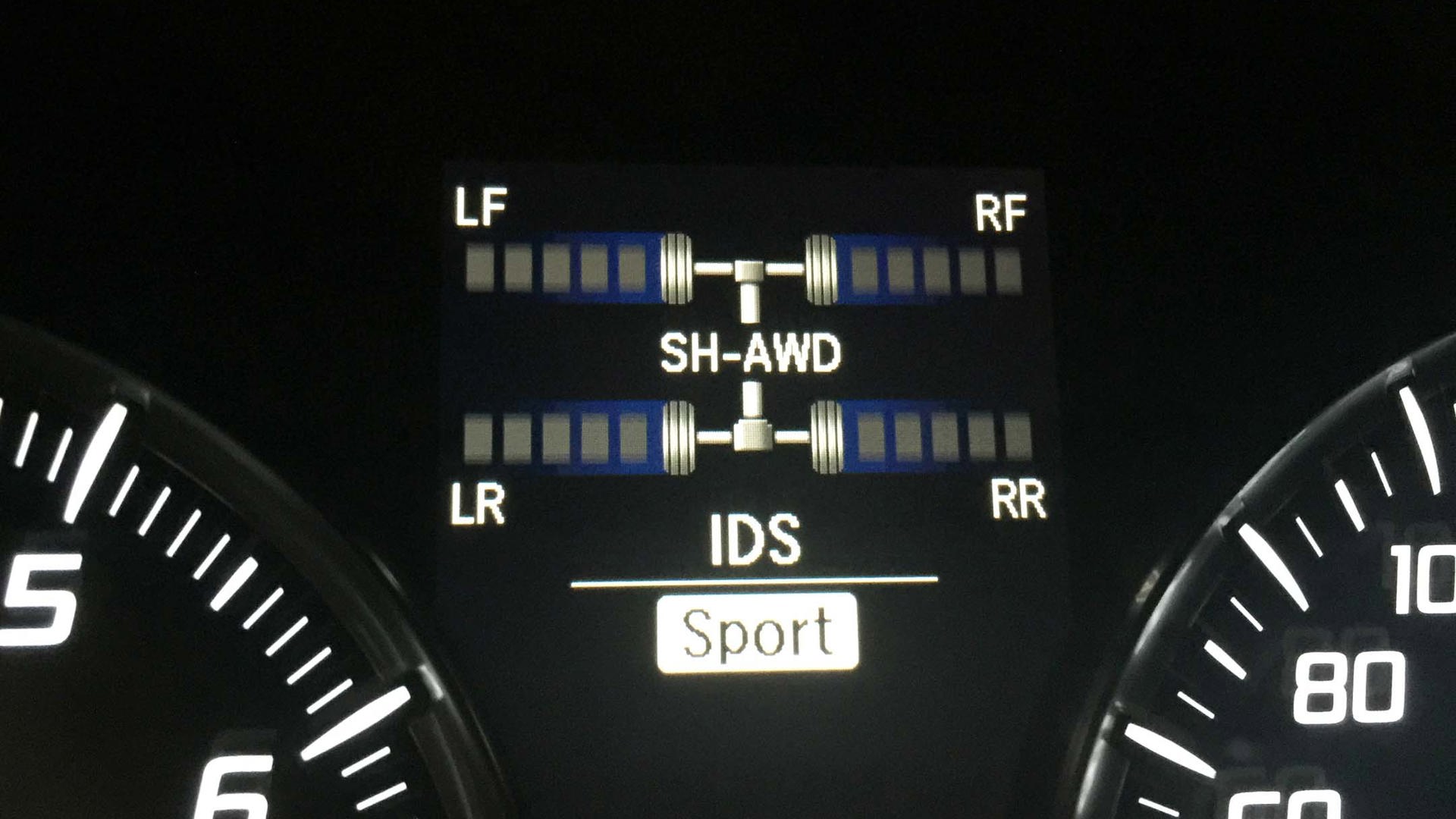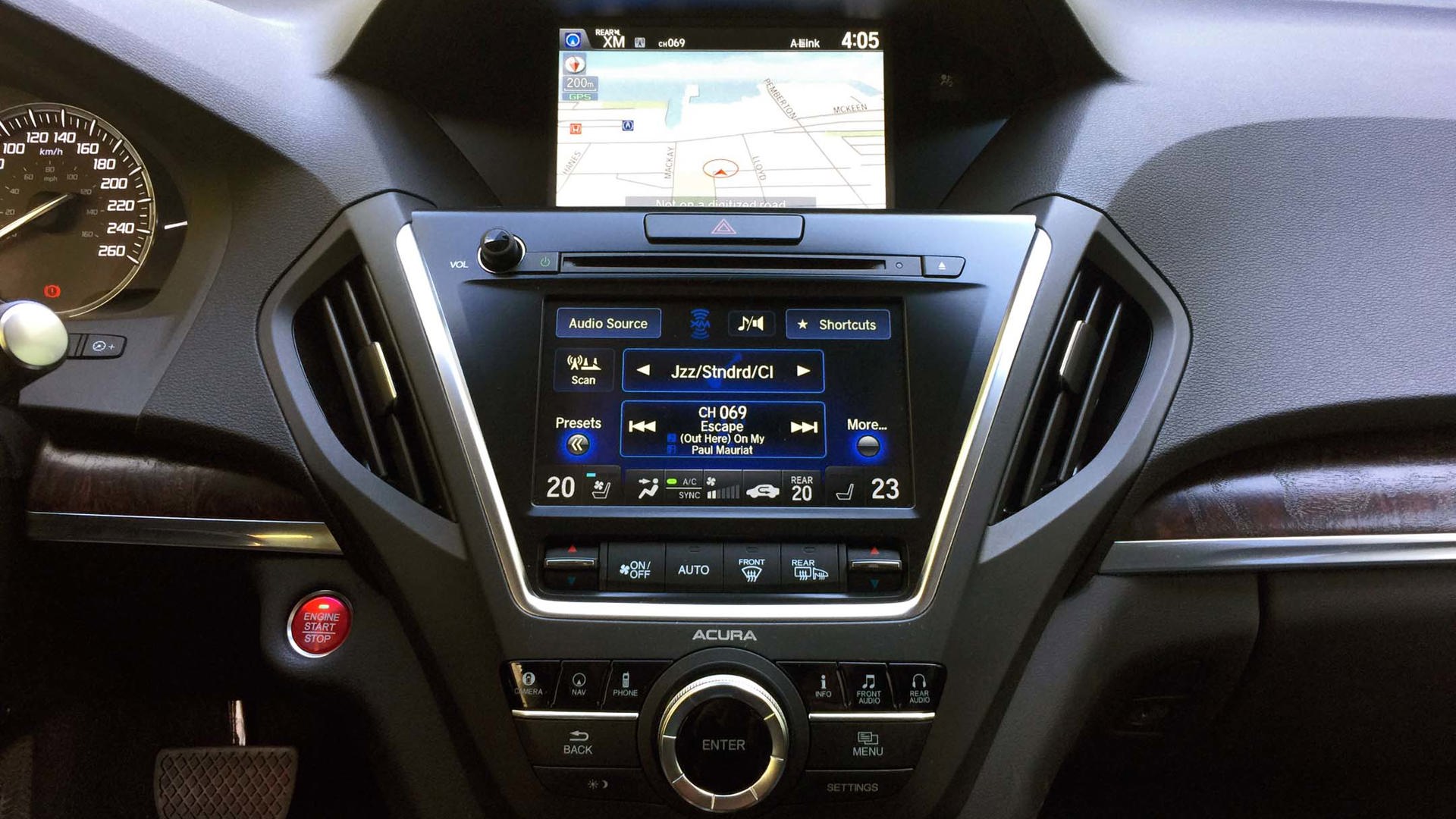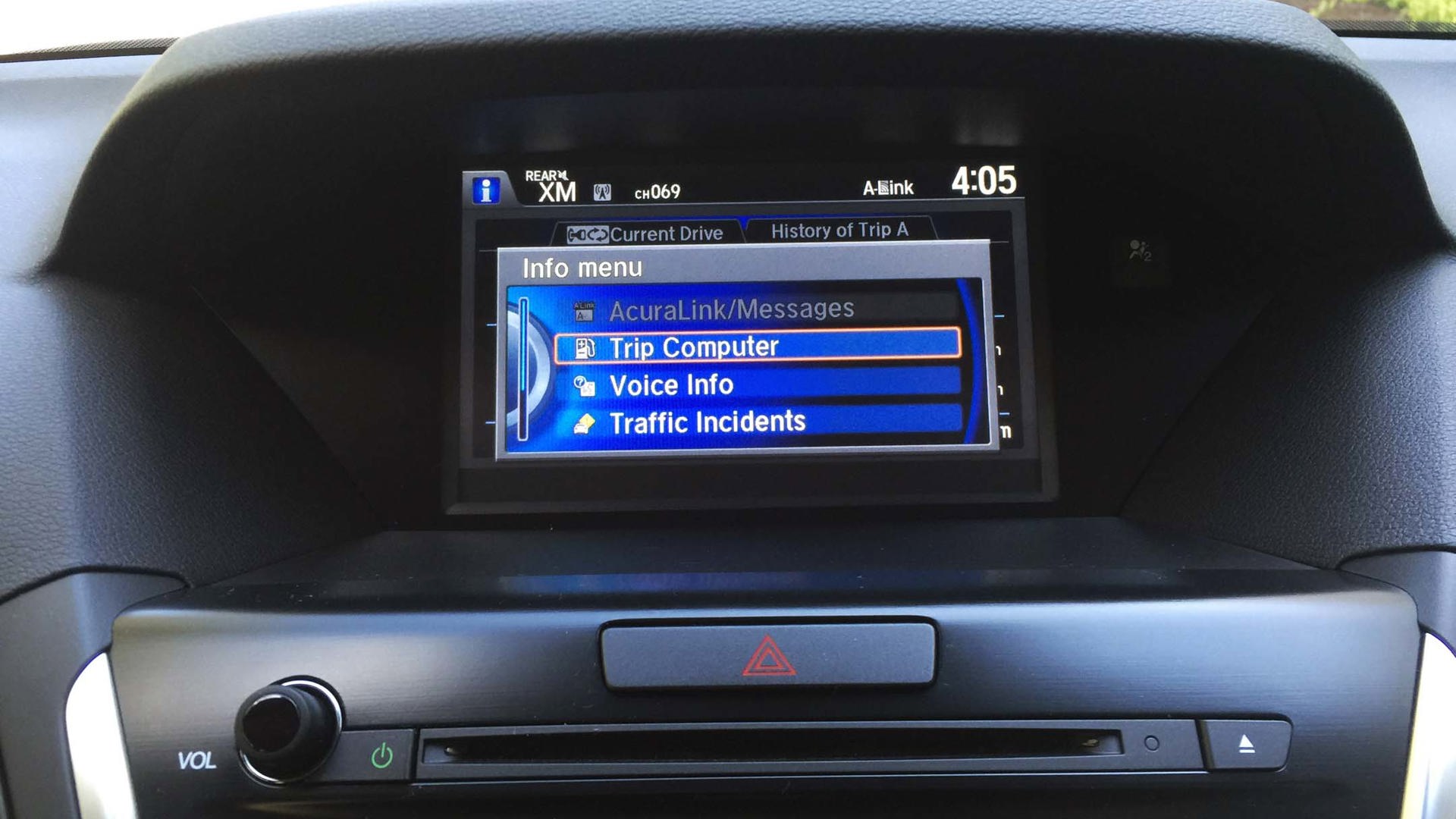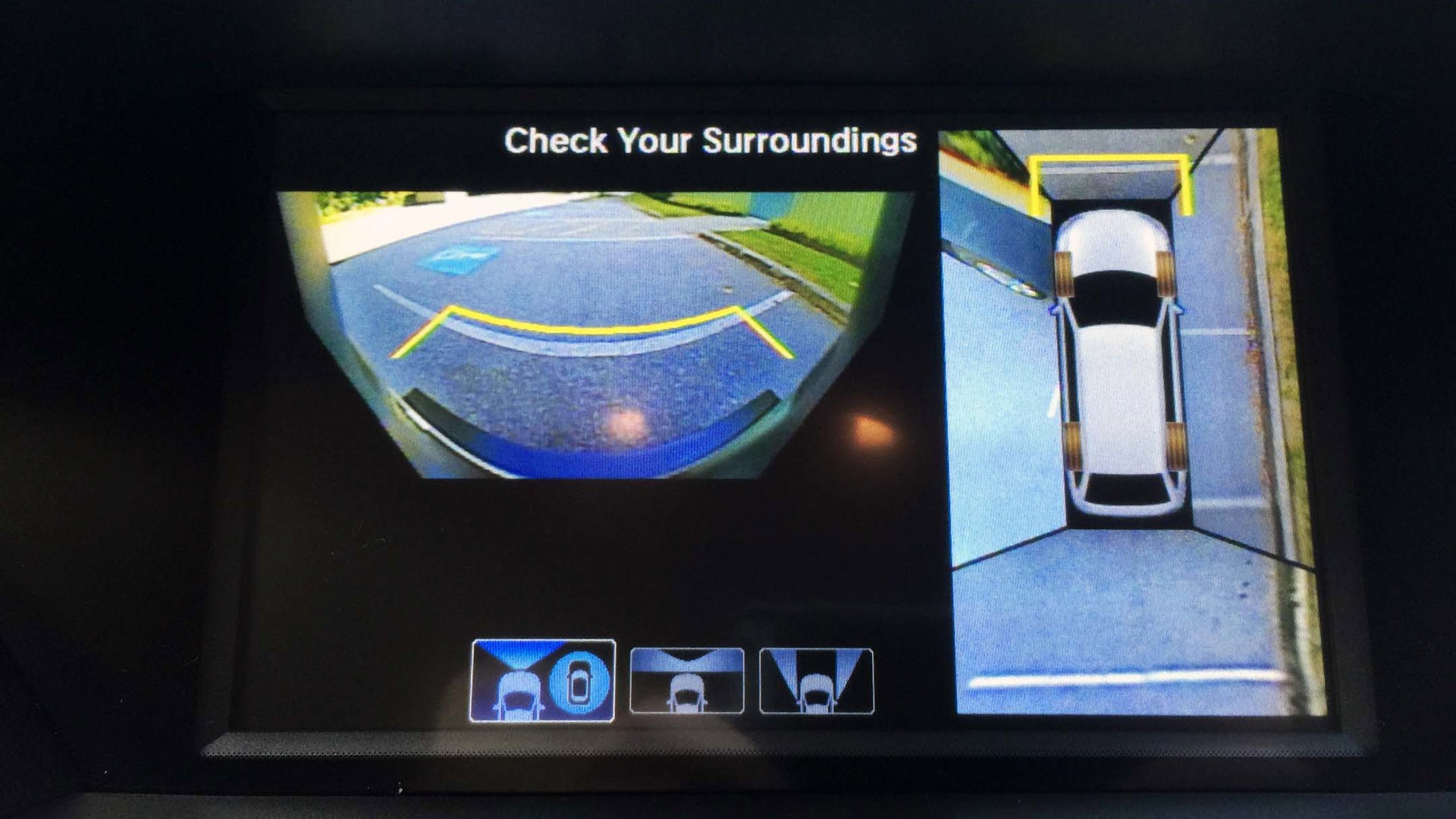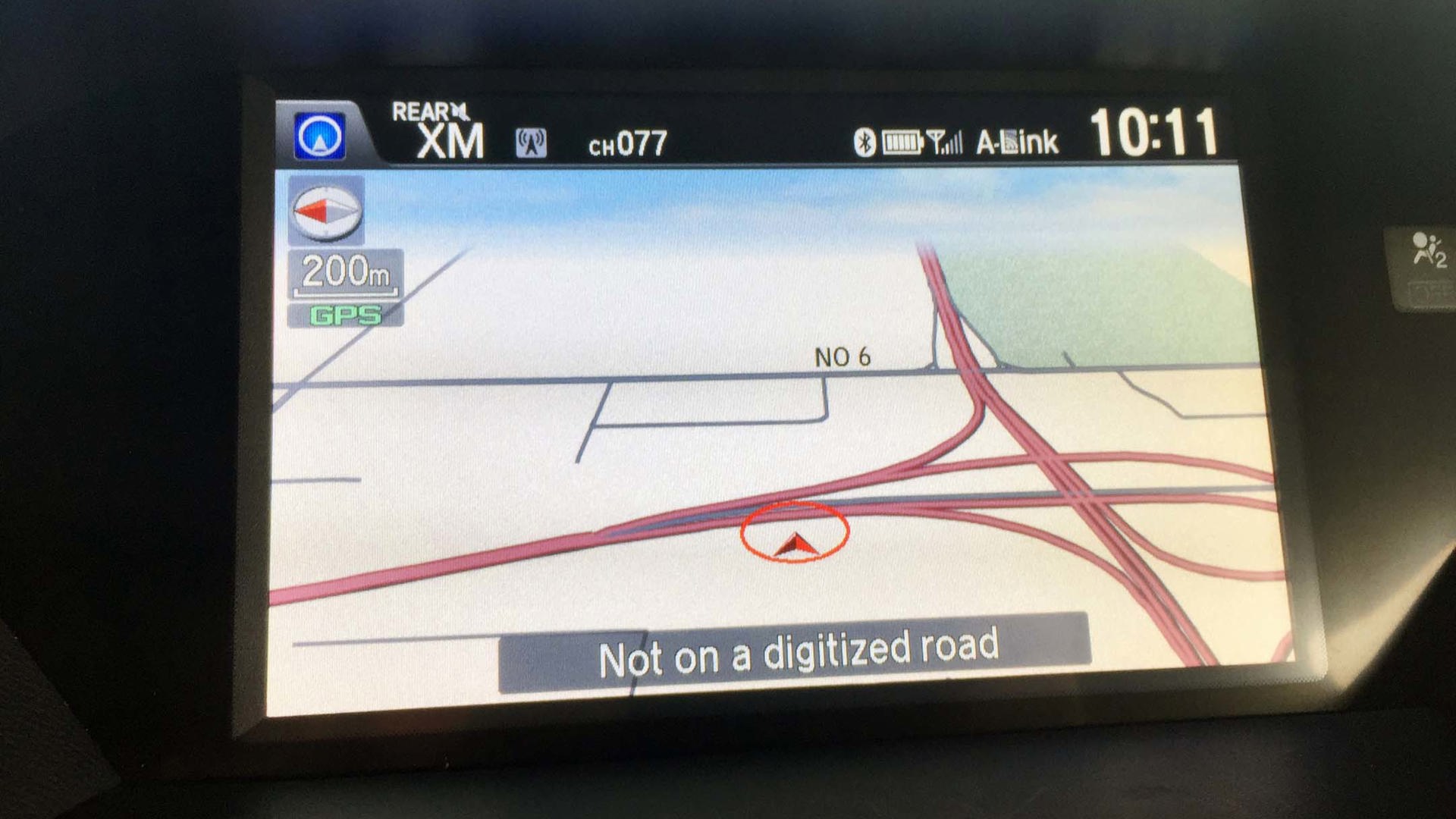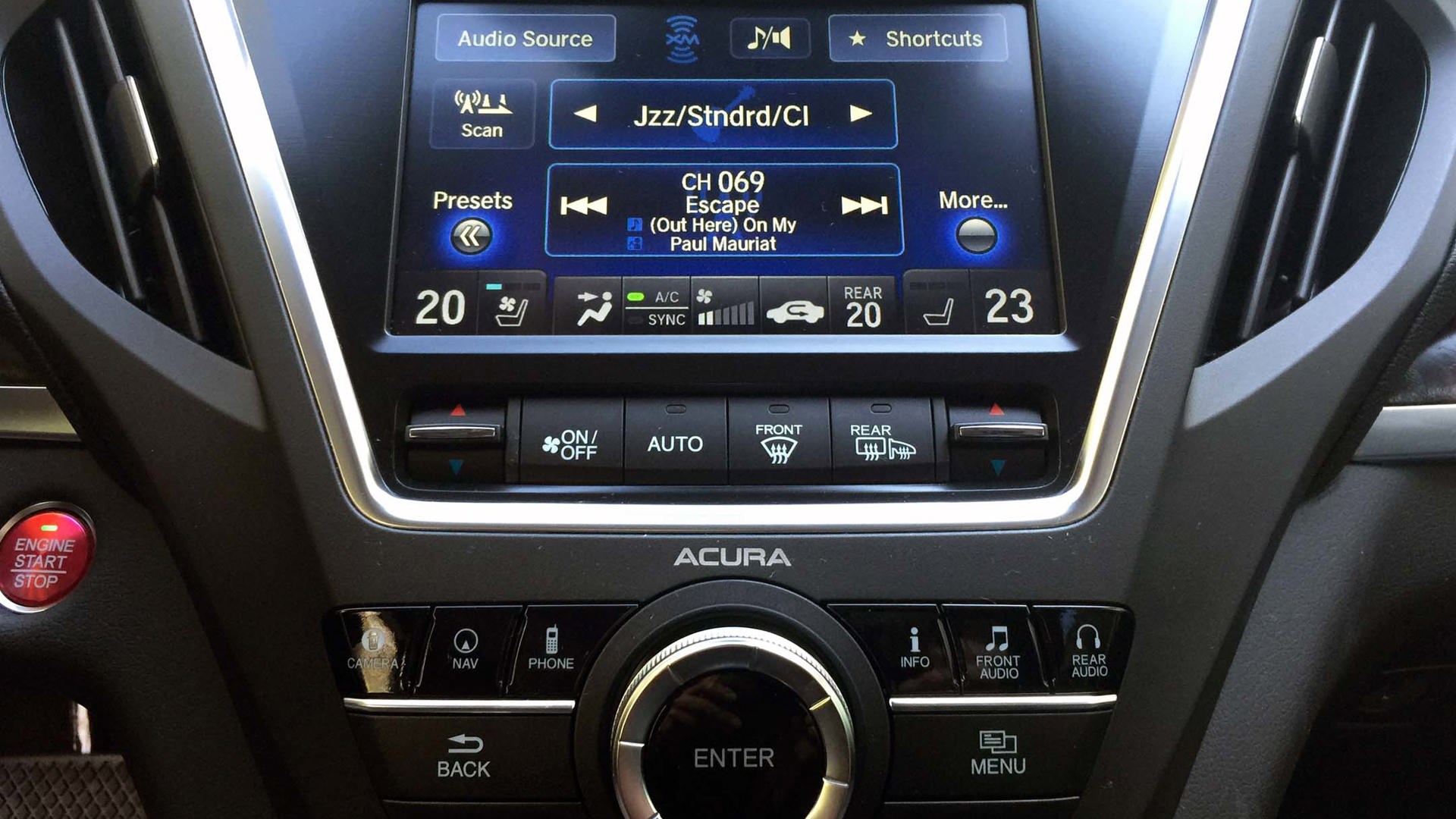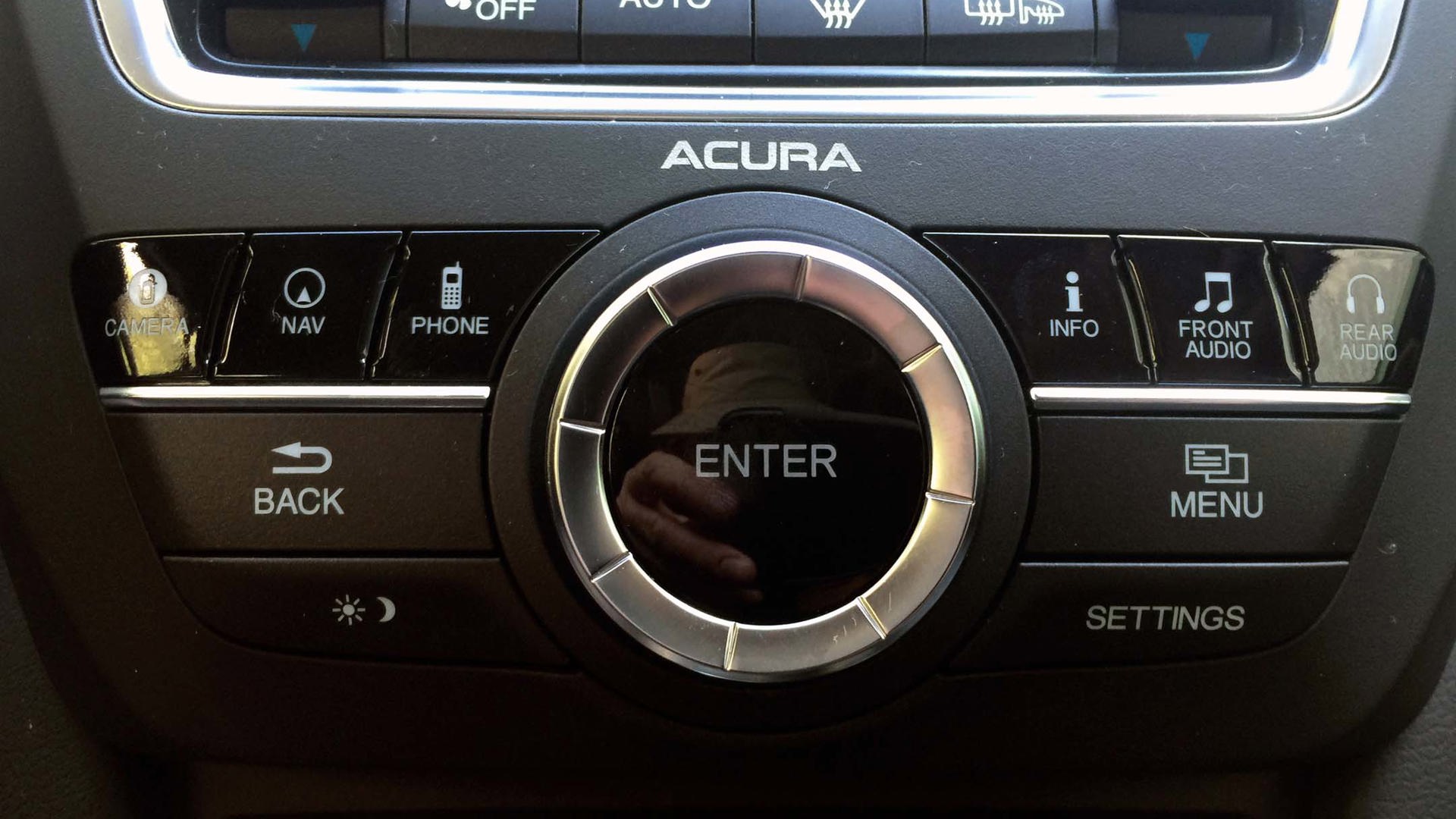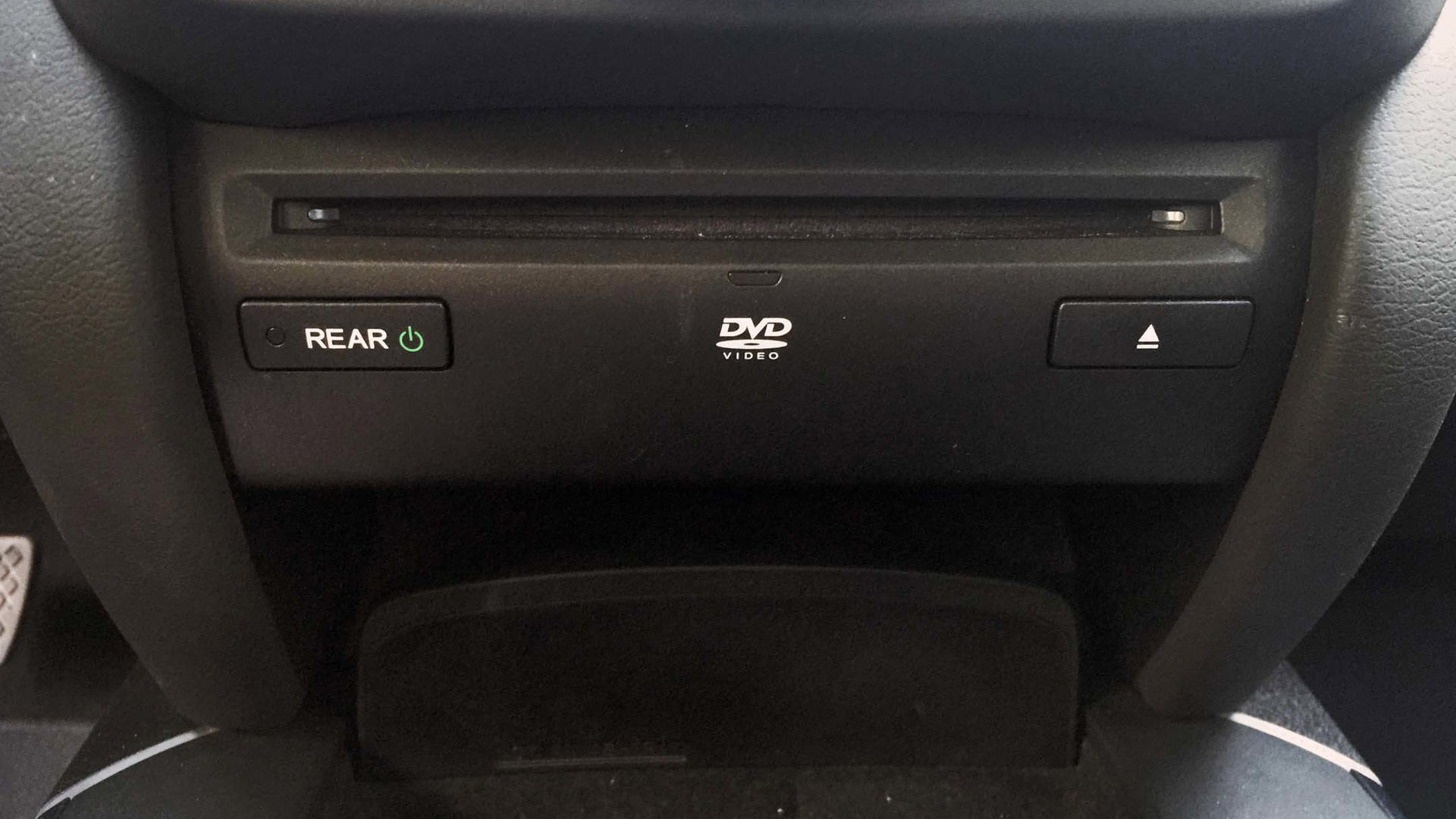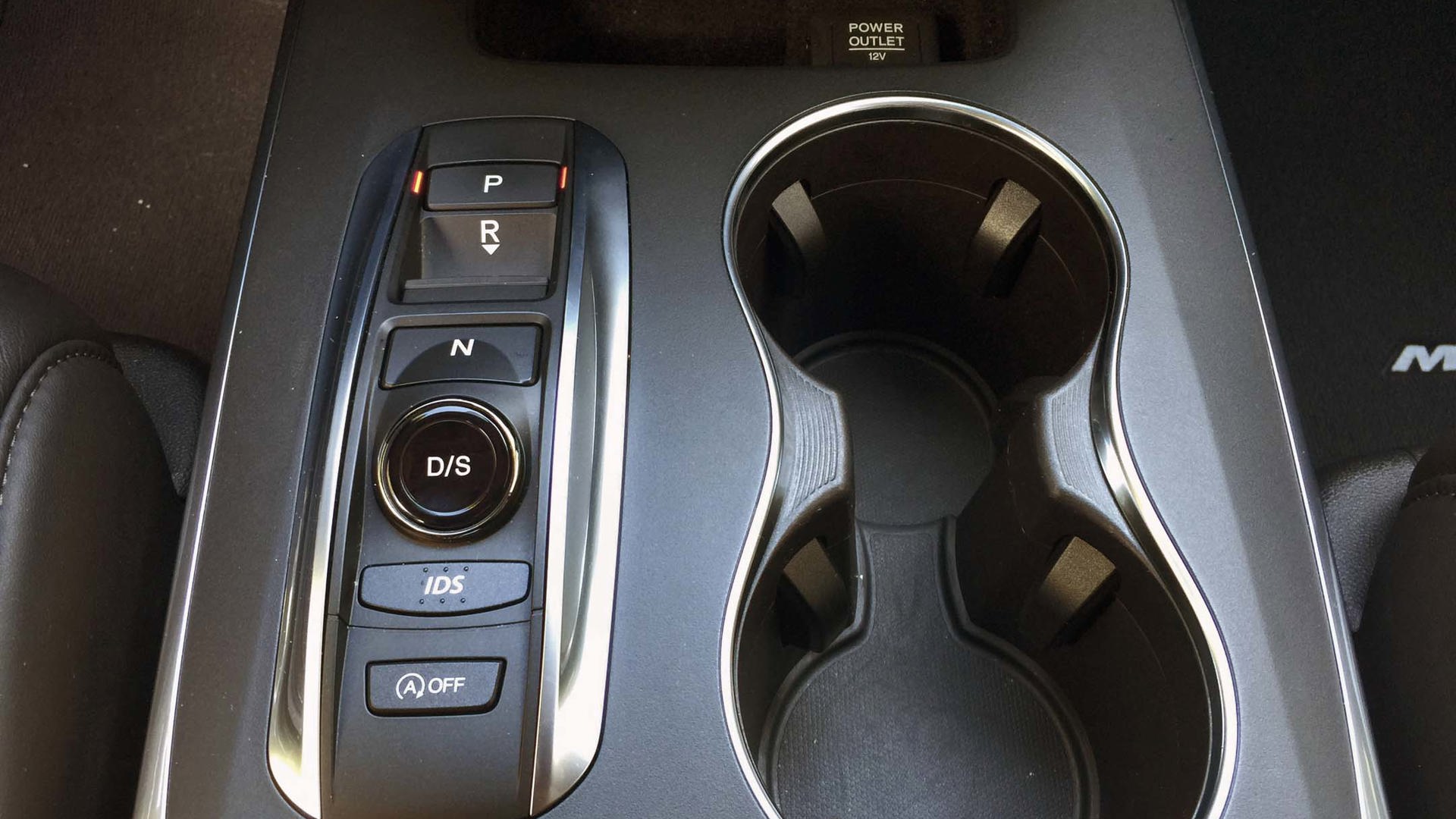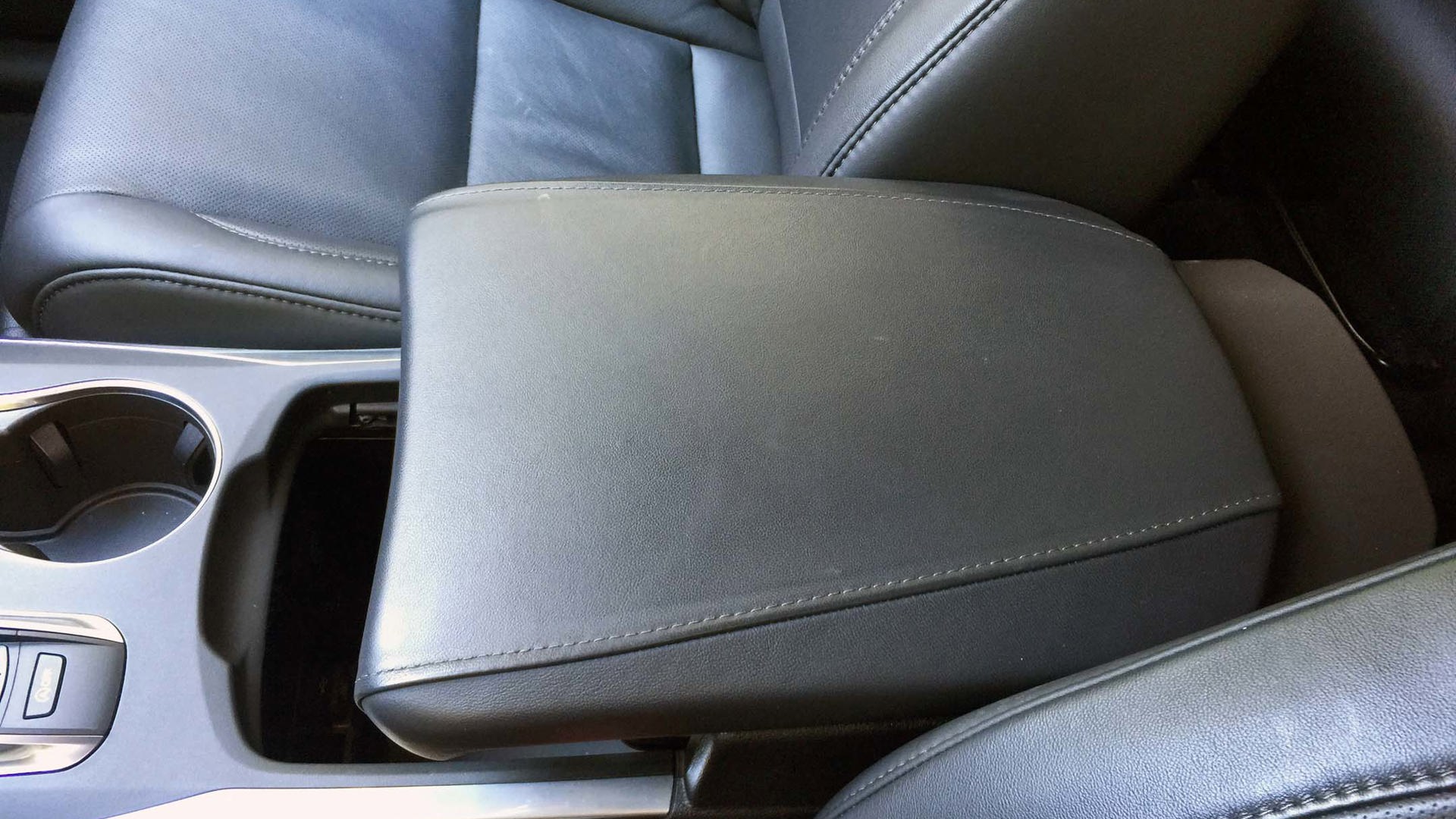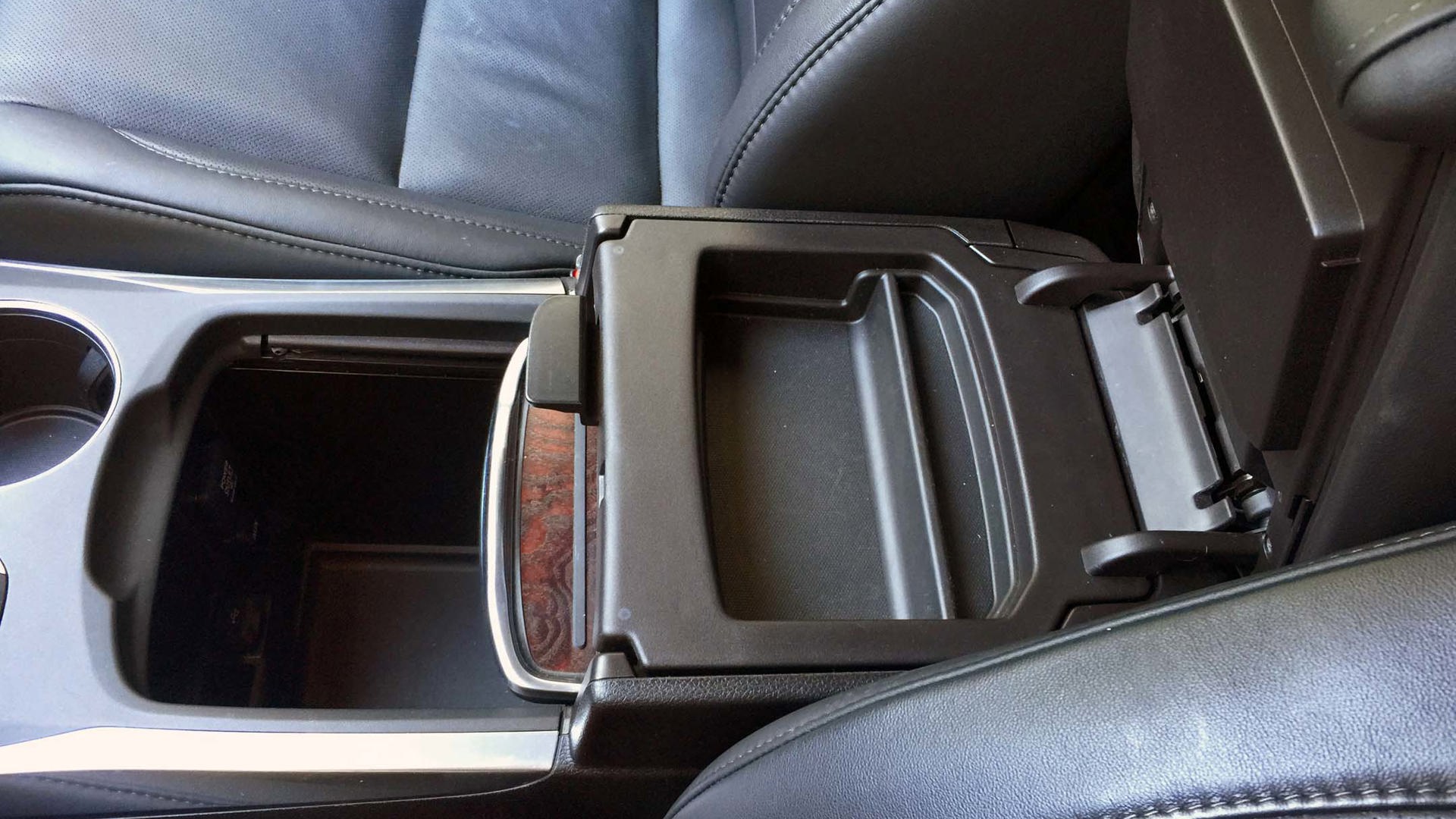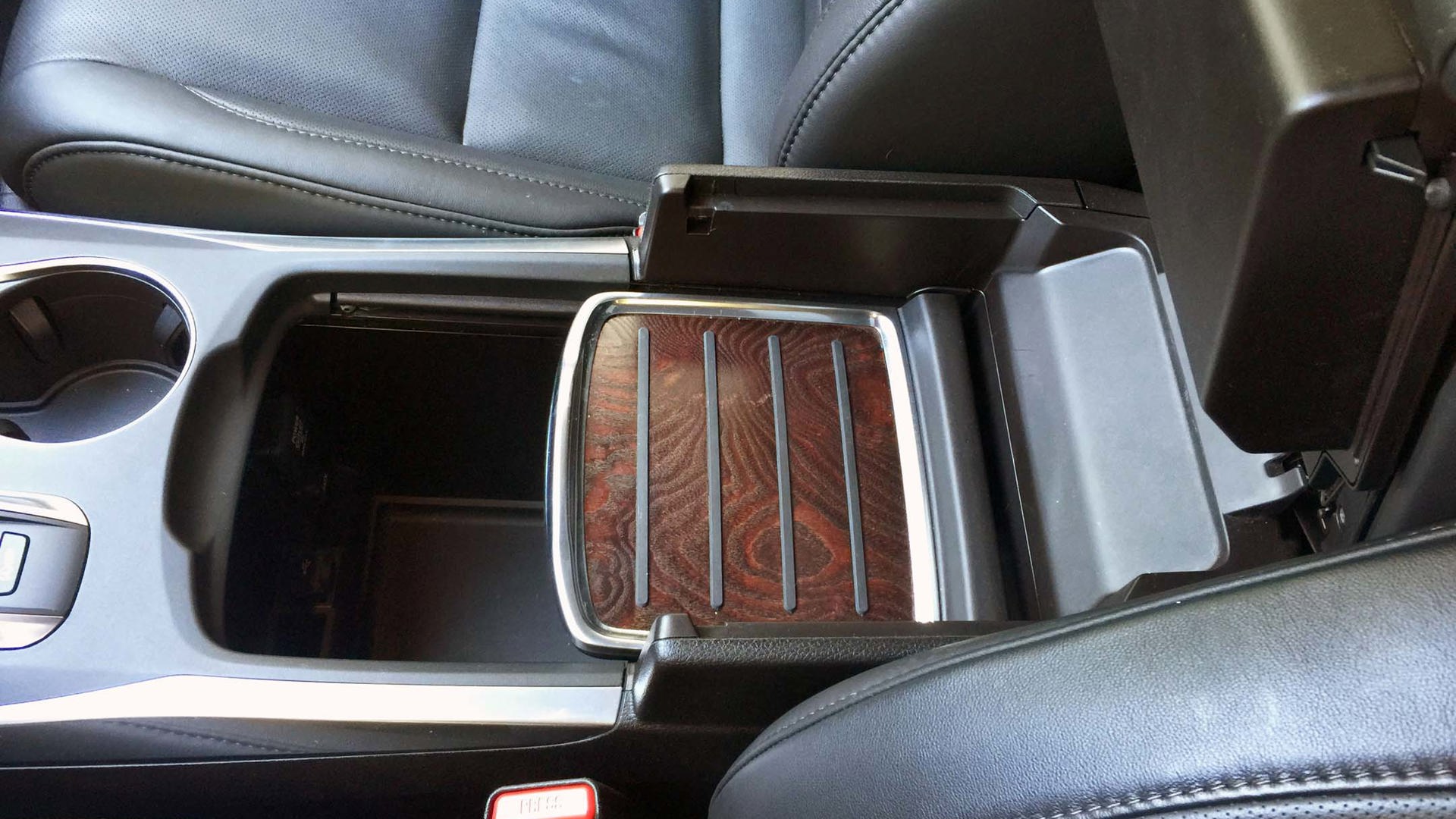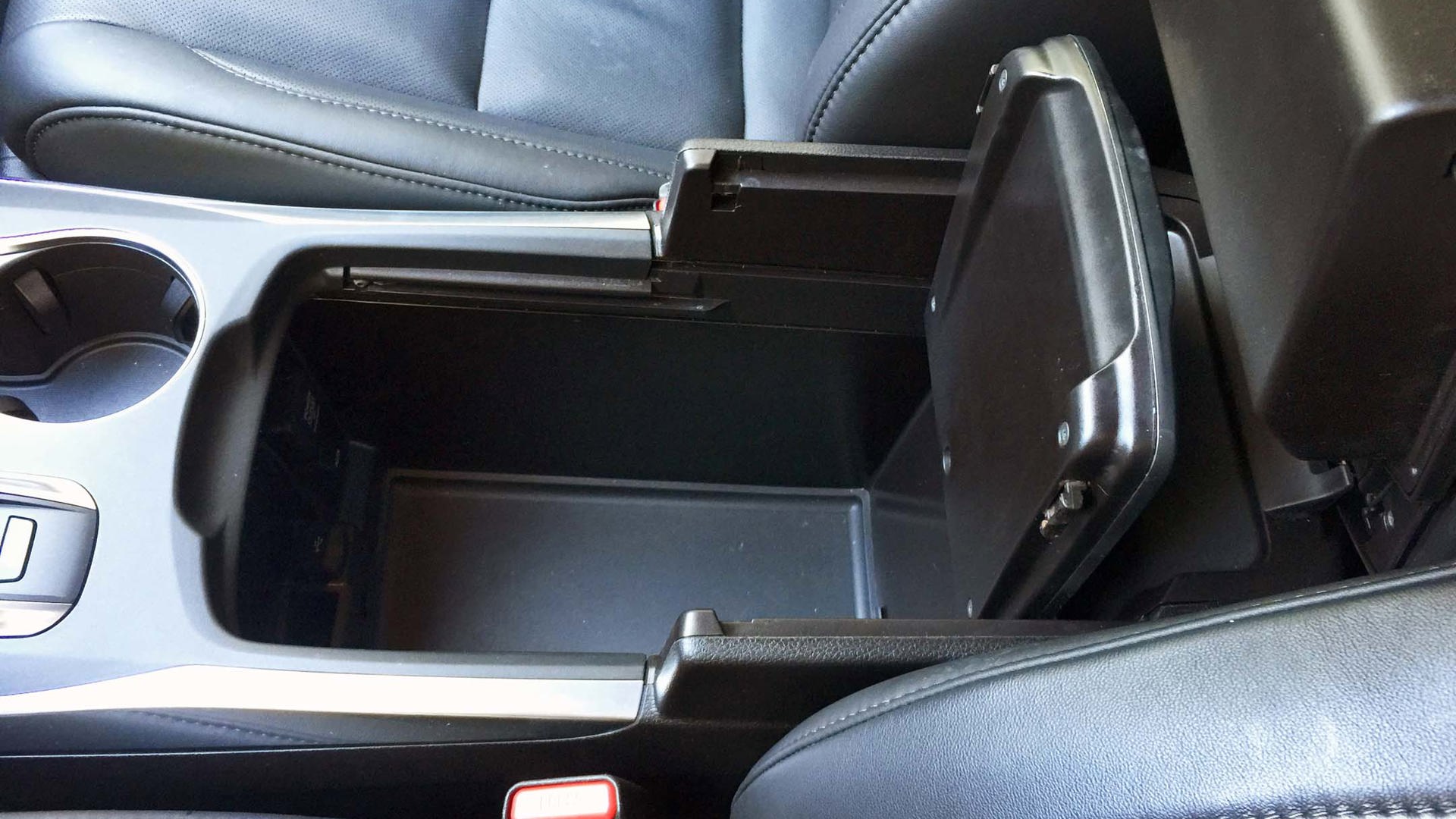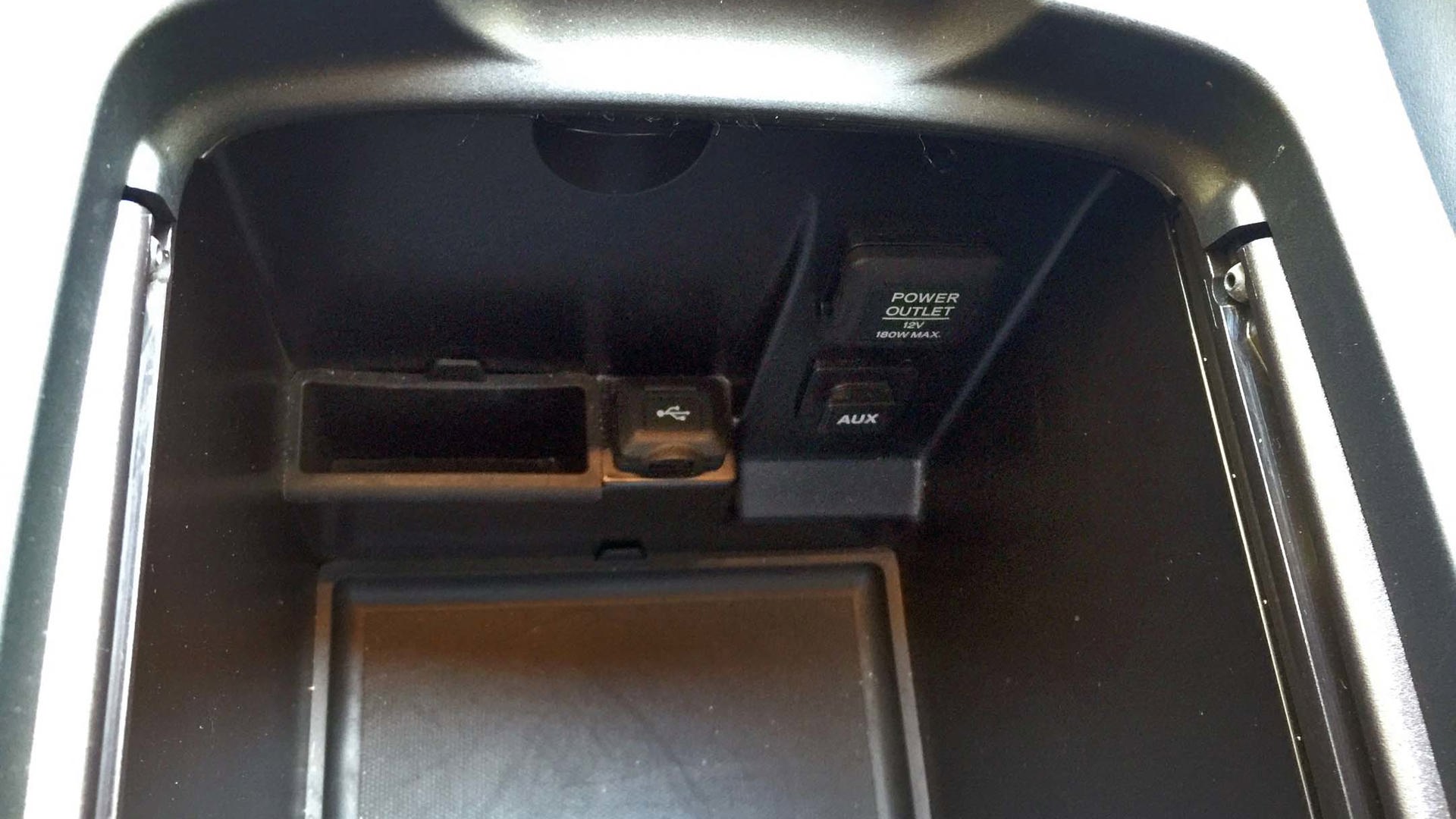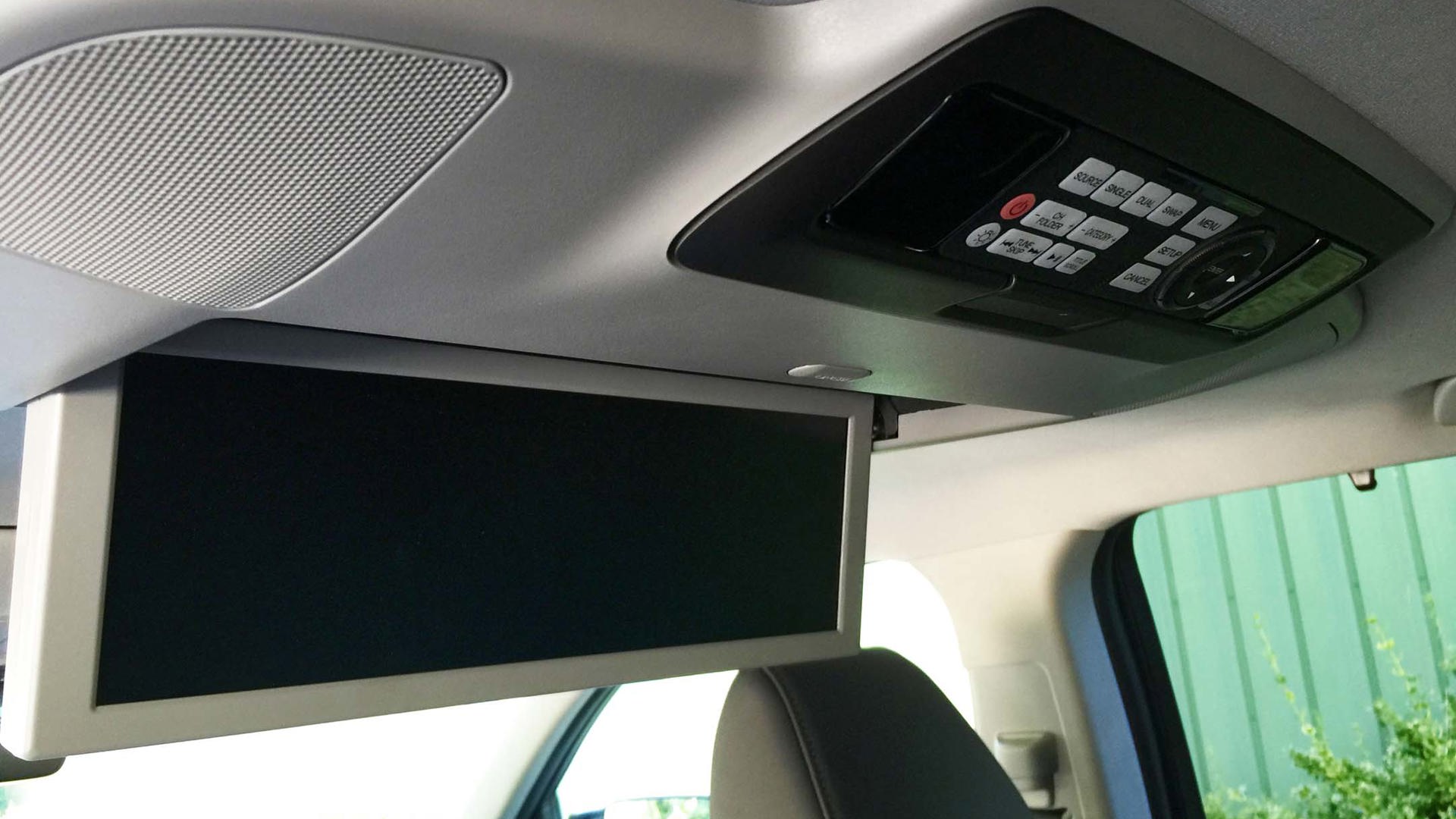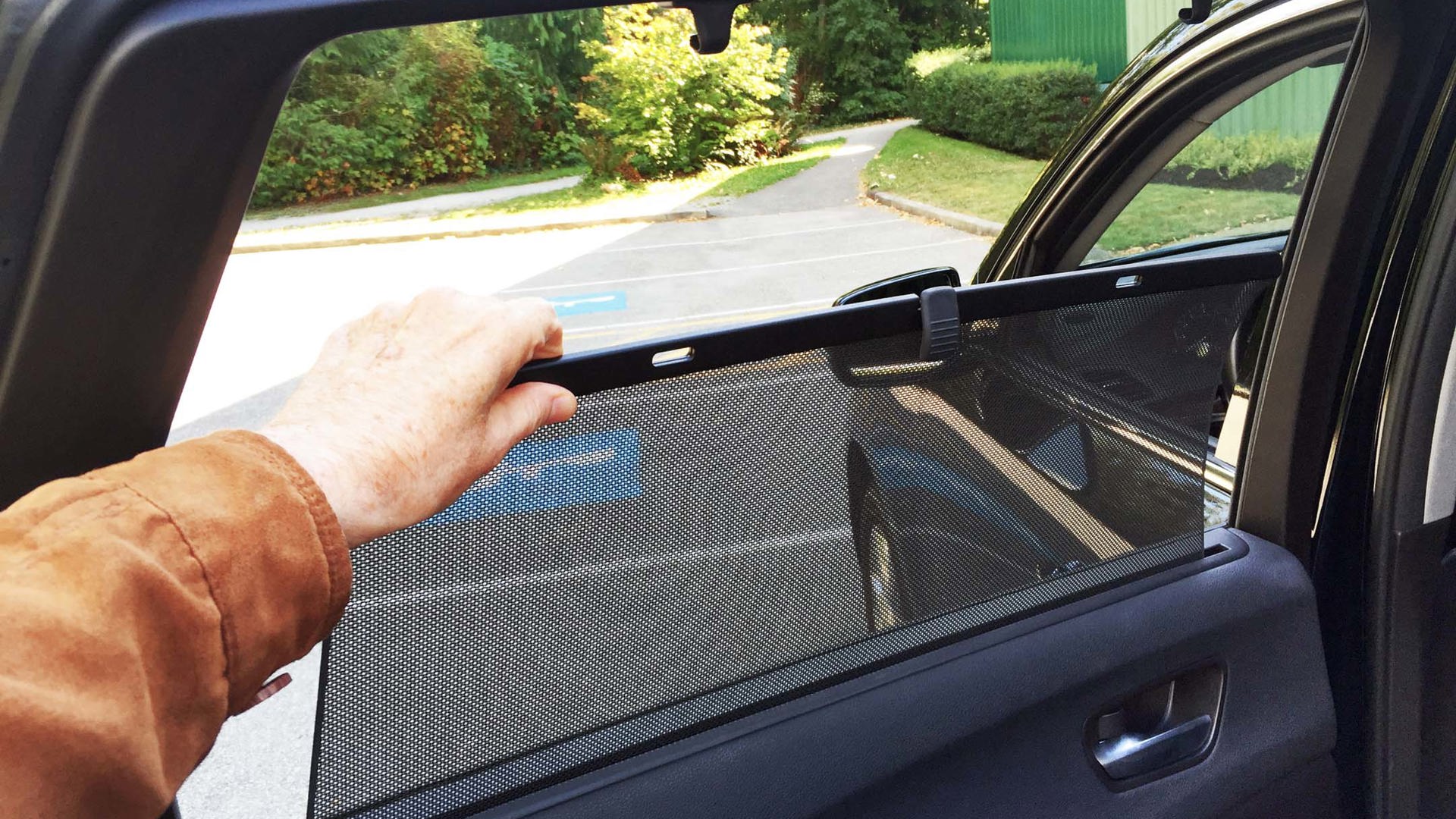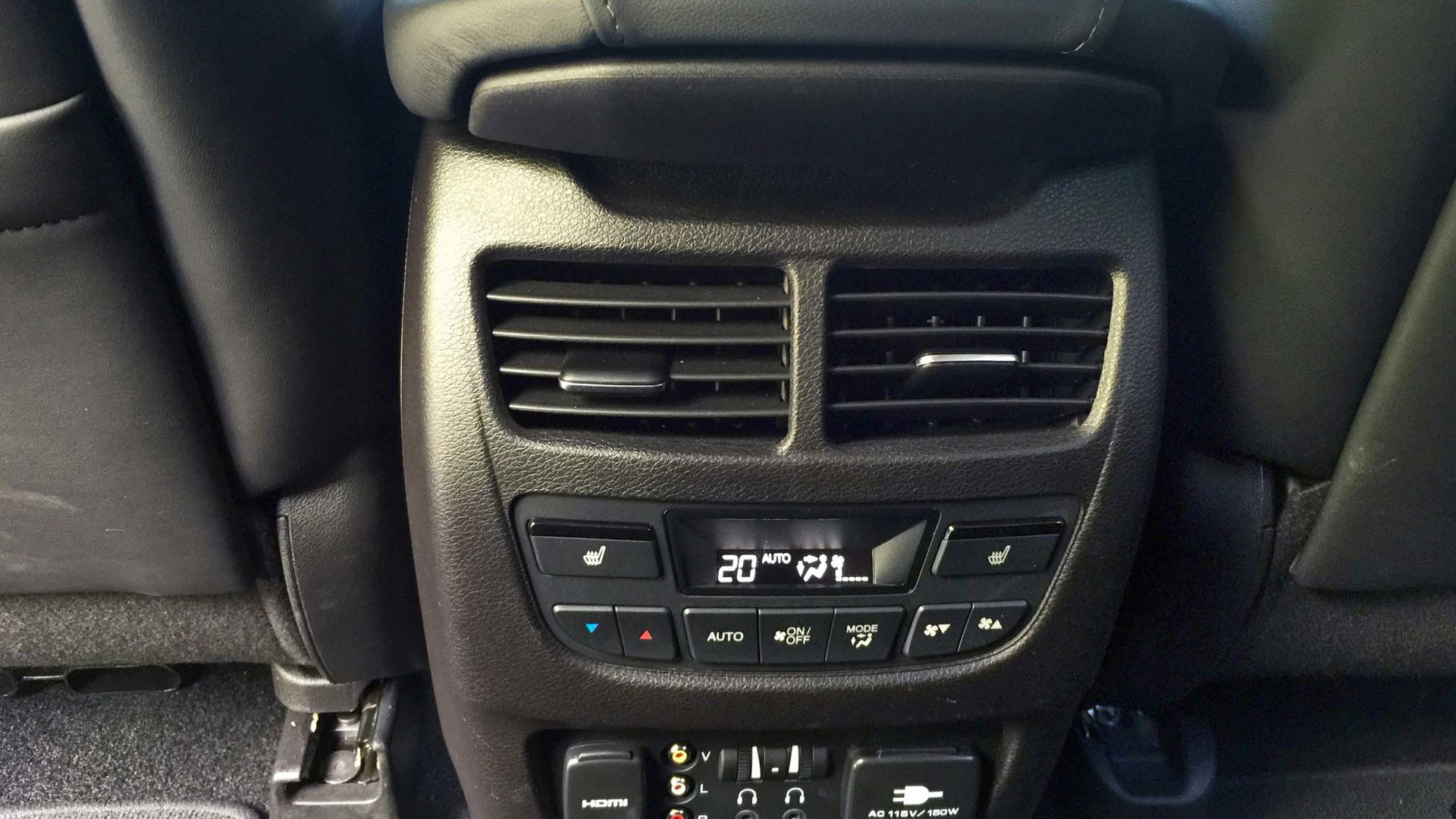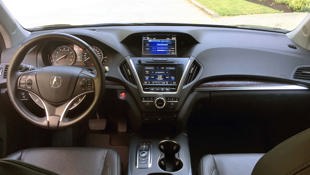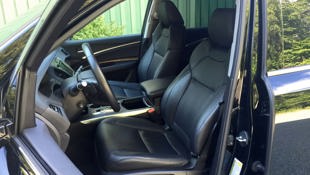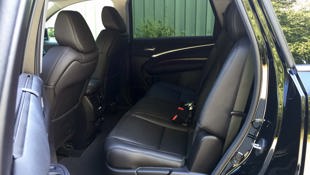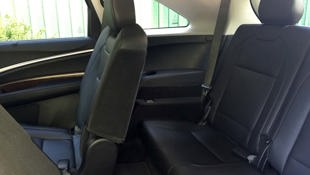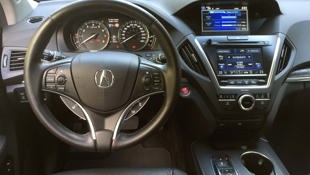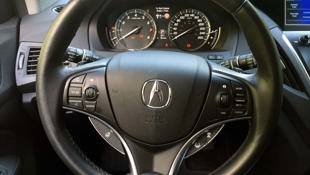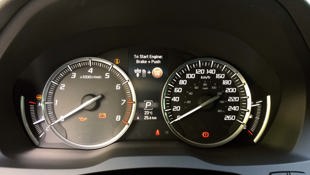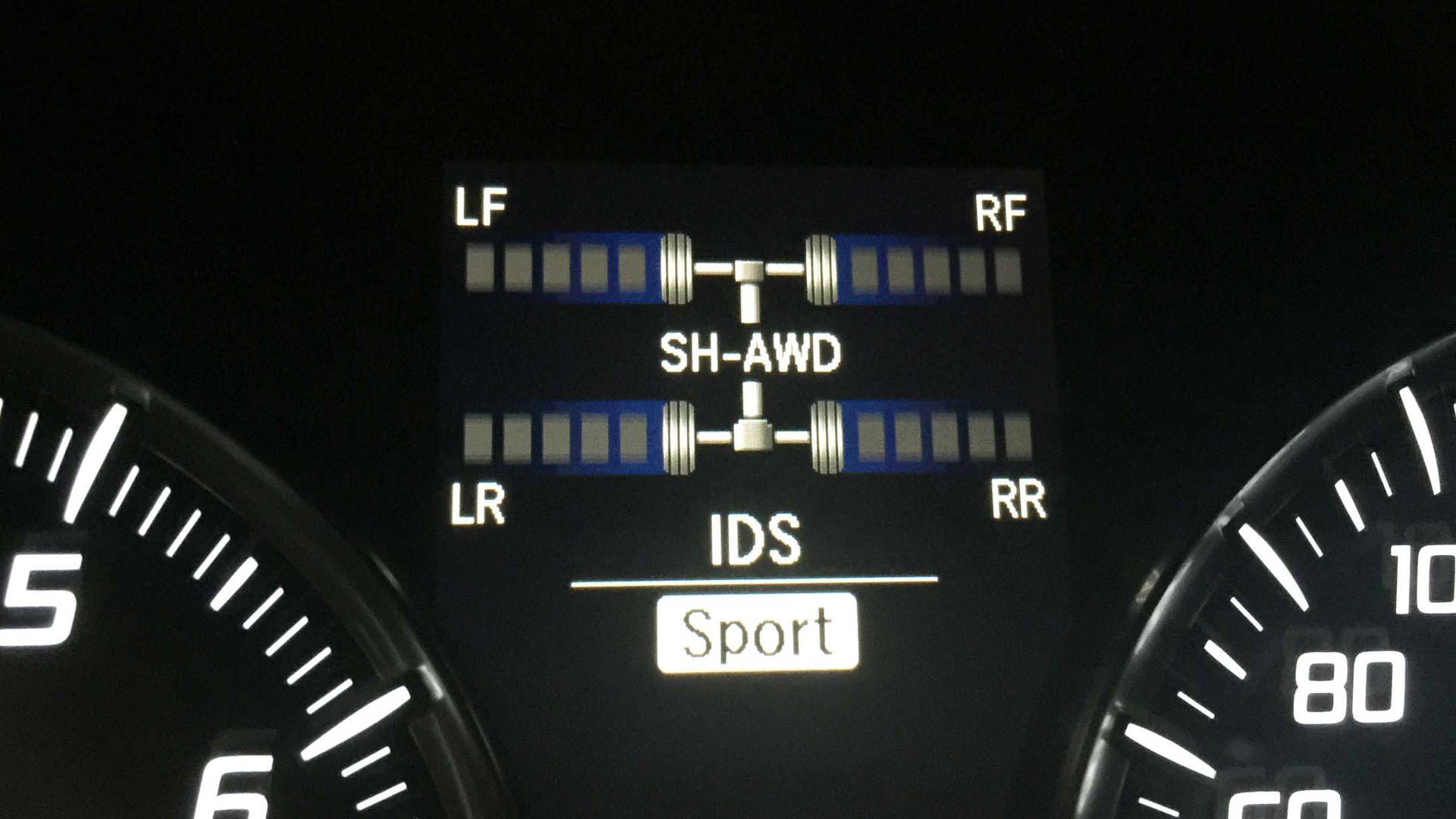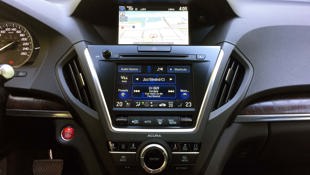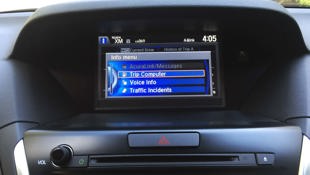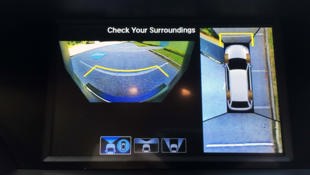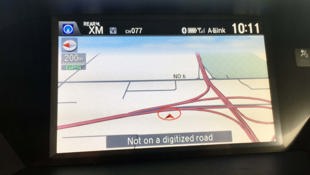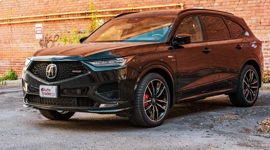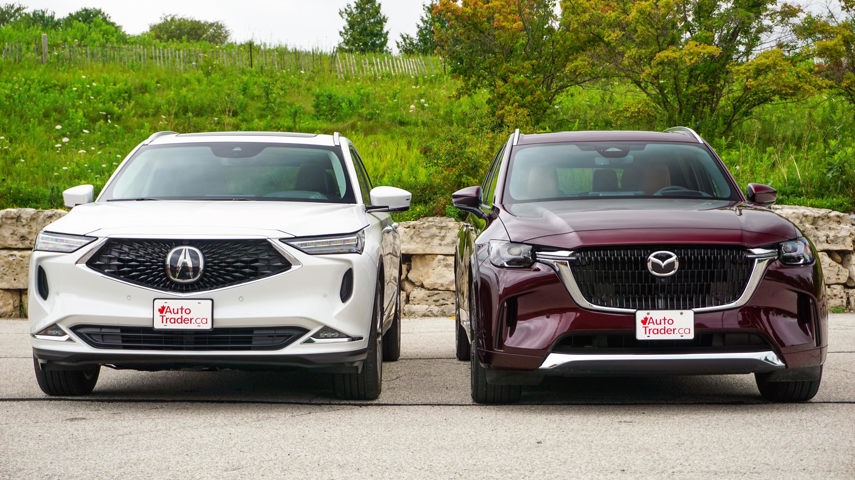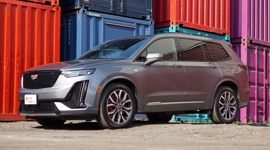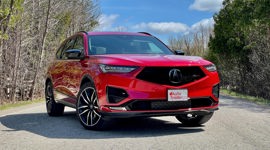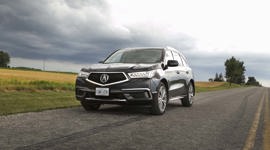 AutoTrader SCORE
AutoTrader SCORE
-
STYLING7/10
-
Safety8/10
-
PRACTICALITY8/10
-
USER-FRIENDLINESS6/10
-
FEATURES8/10
-
POWER7/10
-
COMFORT7/10
-
DRIVING FEEL7/10
-
FUEL ECONOMY7/10
-
VALUE7/10
The 2017 Acura MDX is already in showrooms but as of this writing Acura is still offering 2016 models with end-of--model-year rebates up to $6,000(!). The 2016 MDX received some significant upgrades, including a new nine-speed automatic transmission replacing the six-speed unit; a new push-button transmission gear selector replacing a console shift lever; a fuel-saving idle stop-start feature on Elite trims; enhancements to the Super Handling All-Wheel-Drive system (SH-AWD) to improve handling; new Road Departure Mitigation (lane-keeping assist) and rear cross-traffic warning; iPhone Siri voice recognition capability; and a driver’s seat that automatically moves rearward when the driver’s door is opened. 2017 models keep all of that stuff but offer revised front-end styling, more luxury features, and later this year, a new Hybrid model.
The MDX continues to offer a normally aspirated 3.5L V6 engine that develops a competitive 290 hp at 6,200 rpm and 267 lb-ft of torque at 4,700 rpm.
While some of the MDX’s competitors have migrated to smaller turbocharged or supercharged engines, the MDX continues to offer a normally aspirated 3.5L V6 engine that develops a competitive 290 hp at 6,200 rpm and 267 lb-ft of torque at 4,700 rpm. Acura’s lusty SOHC 24-valve direct-injection V6 offers spirited acceleration with an estimated 0–100 km/h time of just 6.5 seconds. Switch from Drive to Sport, and the new nine-speed automatic transmission hangs on to each gear a little longer for sportier performance. As well, the IDS (Integrated Dynamic System) button on the console allows the driver to choose from three levels of performance: Comfort, Normal and Sport. Each varies the steering effort, throttle response, SH-AWD responsiveness and engine sound, but not the suspension firmness. The differences between Comfort, Normal and Sport aren’t dramatic but the extra steering weight and throttle responsiveness in Sport mode makes for a sharper-edged driving experience – but probably worse fuel economy.
The MDX offers better fuel economy than rivals like the Audi Q7, BMW X5 and Mercedes-Benz GLE due in part to its cylinder deactivation feature. The 3.5L V6 automatically deactivates three of its six cylinders under light load conditions, saving fuel. But it’s curious that the NRCan fuel consumption ratings for the 2016 MDX Base, Navi and Tech trims equipped with the new nine-speed automatic transmission, at 12.7 / 9.1 / 11.1 L/100 km (city/highway/combined), aren’t any better than the 2015 MDX with its six-speed automatic transmission. The 2016 top-of-the-line Elite model, equipped with the idle stop-start feature, does slightly better with 12.2 / 9.1 / 10.7 L/100 km. But after a week in my 2016 MDX Elite, I was averaging 11.5 L/100 km in mixed city and highway driving. And the MDX requires premium unleaded 91 octane gas.
The new idle stop-start feature works well, shutting off the engine while paused at traffic lights and restarting it quickly when the brake pedal is released. However, the engine won’t stop unless you press really hard on the brake pedal – a message on the info screen prompts you to do this if you don’t apply enough pressure. A button on the dash allows you to deactivate idle stop-start if you want.
I was somewhat disappointed in the performance of the new nine-speed automatic transmission. Though it provides a low-revving, fuel-saving engine speed of 1,800 rpm at a cruising speed of 100 km/h, shifts are not always smooth and I found that it tends to surge from first to second gear, particularly in Sport mode. Paddle shifters are found behind the steering wheel for those want to do things manually.
The MDX’s ride and handling are on the firm side but thanks to the MDX’s wide stance, long wheelbase and fully independent suspension that automatically adjusts to different surfaces, the MDX feels very stable and secure at high speeds and offers a very comfortable freeway ride. However, the MDX is a big and heavy vehicle (1,903 kg), and it doesn’t feel agile or nimble in spirited driving. You’re always aware of its mass.
All MDX’s in Canada have standard Super Handling All-Wheel Drive (SH-AWD) and for 2016 the system has been revised to enhance torque transfer and handling. SH-AWD works by continually varying front-to-rear torque distribution depending on driving conditions but its big advantage is the way it sends more power to the outside rear wheel when cornering to help prevent oversteer and enhance stability. A real-time graphic in the instrument cluster shows the actual distribution of torque while cornering. As it was sunny and dry during my test week, I couldn’t experience the improvements to the SH-AWD system but in previous drives on snow-covered roads, I’ve been very impressed with the extra cornering grip and stability that SH-AWD provides. It not only improves performance; it adds an extra level of safety.
Every 2016 MDX includes a group of sensors and driver-assist features called “AcuraWatch” that uses a combination of cameras and radar sensors to warn of potential collisions and in some cases automatically steer or brake to avoid collisions. It includes adaptive cruise control with low-speed following, forward collision warning, lane-departure warning, lane-keeping assist, collision-mitigation braking with pedestrian detection, and a multi-angle back-up camera. AcuraWatch is a previous winner of AJAC’s Best New Technology Award for Safety.
New for the 2016 MDX is Road Departure Mitigation: a camera on the windshield detects lane markings and road edges ahead. If the MDX drifts out of its lane, warning buzzers and flashing instrument lights alert the driver. If the driver fails to act, the system automatically steers the vehicle back into its lane. It can even apply brake pressure if necessary. To try it, I deliberately drifted across a dotted line on the freeway. The warning lights and buzzers activated and the MDX gently steered back into the lane with little drama. But as Brendan McAleer pointed out in his comparison of the MDX with the RX350, the system won’t activate if the camera can’t see the road markings on a rainy night.
Another new feature for 2016 is the optional Rear Cross Traffic Monitor. When backing up, it uses the blind-spot radar sensors to detect if another vehicle is crossing behind. A loud warning sound alerts you to a potential collision, giving you time to slam on the brakes. It’s especially useful when backing out of a parking space in a crowded parking lot. Given the limited rear visibility in the MDX, this feature is probably worth the money.
The multi-angle back-up camera includes views to the front, sides, rear and a top-down 360-degree view of the area around the vehicle. When parking, this is great for spotting low walls and barriers that aren’t visible through the windows. As well, the MDX rear parking sensors chime an audible alert when approaching objects behind. However, I found that objects higher than the rear window ledge, such as overhanging tree branches, will not set off the warning buzzers.
Driving at night, the MDX’s ten “jewel-eye” light-emitting diode (LED) low-beam headlights provide a bright, wide swath of light while the high-beams’ illumination is slightly patchier, but still very bright. The MDX also has LED taillights that are brighter than traditional bulbs. Inside the cabin, I found the back-lit instruments and controls easy to see and use at night. I also observed that the small VIN plate under the windshield reflects the light from street lights as the vehicle passes under them, creating a flashing effect in the windshield – very irritating!
Speaking of lighting, the MDX Elite features puddle lights that automatically illuminate the ground under the front doors as you approach the vehicle – where I live in Vancouver, this would undoubtedly be useful! Equipped with keyless entry, unlocking the MDX’s driver’s door is as simple as gripping the door handle and starting the car simply means pressing a button on the dash. You never need to bring out your key. The MDX also includes a remote starter if you wish to start the MDX before you get in.
The MDX’s cabin is wide and roomy with three rows of seats in a 2-3-2 format. The first and second rows have plenty of legroom and headroom and the second-row 60/40 split seats can be slid backwards to create more second-row legroom or slid forwards to create additional legroom for the third-row passengers. Getting into the third row isn’t as difficult as you might imagine: a button on the second-row seat cushion automatically folds the second-row seatback and slides the whole seat forwards. Another button on the rear of the second-row seatback does the same thing to allow third-row passengers to get out. Though the third-row seats aren’t that comfortable, headroom is spacious enough for an adult and legroom is adequate with the second row moved forwards a bit.
The MDX’s interior is very nicely finished, if a bit busy in its design. The mostly black leather interior in our tester featured attractive silver accents and matte wood trim on the dash and doors. Both front seats have power height, recline, tilt, fore-aft and lumbar adjustments and seat heaters and a power tilt/telescopic steering wheel is standard. I found the driver’s seat comfortable but a bit too wide for my narrow frame.
The MDX’s busy dashboard features two touchscreens, a jumble of buttons and a large, intimidating control dial. The main benefit of having two screens, in my experience, is being able to view two different screen features without having to switch back and forth on one screen. For example, the upper screen can show a navigation map while the lower screen can show the current radio station or heater display. In the MDX, the upper screen can also be split between two functions such as map on one side and telephone on the other.
Not all vehicle functions can be displayed on both screens. The upper screen is mostly for viewing the map, trip computer, telephone, vehicle settings and back-up camera while the lower screen can display audio, telephone, climate control, and settings. Acura’s combination of touchscreens, control dial and hard buttons provides many ways of operating vehicle functions, but to me, it seems unnecessarily complicated.
I noted that the lower screen doesn’t have a hood to shield it from glare and there are times when it’s impossible to see the washed-out screen. This can be a problem if you want to adjust the fan speed or turn off the heated seats because these can only be adjusted using the touchscreen.
Some important functions can be operated without taking your hands off the steering wheel using the integrated buttons, notably voice activation, telephone, radio volume, cruise control, trip computer, forward collision warning, and road departure mitigation. Voice activation in French or English is also available for the audio and navigation. Between the gauges, the trip computer display provides useful information such as average fuel consumption, outside temperature, compass, tire pressures, real-time SH-AWD torque distribution, and the IDS Comfort/Normal/Sport indicators.
The MDX’s new push-button gear selector on the console is a bit of a surprise. Didn’t they invent these in the 50s and get rid of them in the 60s? The deletion of the console shift lever does allow the cupholders to be placed beside the shift buttons which frees up more space behind them for an extra-large storage bin. And indeed, that wide centre armrest and huge storage bin is one of the best interior features of the MDX. The padded armrest is wide enough for both front passengers to rest their forearms on. Underneath is a shallow storage tray which lifts up to reveal another wood tray which lifts up to reveal a large storage bin with enough space for an iPad, notebook, purse, and other things. There’s also a USB, auxiliary and 12 V outlet inside for phones and chargers.
Second-row passengers in the top-of-the-line MDX Elite model have their own climate controls, seat heaters, headphone and video jacks, a 115 V outlet and HDMI port. For watching videos, there’s a wide drop-down screen above the second row, however, the screen seems a bit far back for comfortable viewing from the second row.
The MDX is a versatile cargo hauler. Its 50/50 split folding third-row seats and 60/40-split folding second-row seats provide numerous configurations for carrying people and cargo. With all the seats folded down, the cargo area is absolutely huge (2,575 L) and could easily swallow a major appliance. With seats on one side folded down, the MDX could transport five passengers and their skis or snowboards inside the vehicle. The cargo floor and walls are fully carpeted to prevent scratches, there’s a metal scratch guard near the rear bumper, tie-down hooks, an underfloor storage bin, and a rear power outlet. Our test vehicle also had the power tailgate.
With its combination of brisk performance, all-weather capability, luxurious and well-equipped interior, seven-passenger seating, roomy cargo area, and advanced safety features, the 2016 MDX is a great all-around vehicle for the family that can afford an SUV in the $50–$70,000 price range. If you test drive one, make sure you try out the controls and infotainment system to see if you find it confusing; and personally evaluate the ride firmness and transmission operation. Also, get into that third-row seat to see if it’s roomy enough for your passengers. If not, you may need a minivan.
Competitors:
Audi Q7
BMW X5
Cadillac SRX
Infiniti QX60
Land Rover Discovery
Lexus RX 350
Lincoln MKT
Mercedes-Benz GLE
| Engine Displacement | 3.5L |
|---|---|
| Engine Cylinders | V6 |
| Peak Horsepower | 290 hp @ 6,200 rpm |
| Peak Torque | 267 lb-ft @ 4,700 rpm |
| Fuel Economy | 12.2/9.1/10.7 (L/100 km, city/hwy/comb.) |
| Cargo Space | 447 L, 2,575 L all seats folded |
| Model Tested | 2016 Acura MDX Elite |
| Base Price | $64,990 |
| A/C Tax | $100 |
| Destination Fee | $2,045 |
| Price as Tested | $67,135 |
|
Optional Equipment
None
|
|
